Movie Review By: Mr. Roboto
Year: 2005
Directed by: Rob Cohen
Written by: W.D. Richter
IMDB Reference
Degree of Cyberpunk Visuals: Very Low
Correlation to Cyberpunk Themes: Low
Key Cast Members:
Lt. Ben Gannon: Josh Lucas
Lt. Kara Wade: Jessica Biel
Lt. Henry Purcell: Jamie Foxx
Capt. George Cummings: Sam Shepard
Dr. Keith Orbit: Richard Roxburgh
EDI (voice): Wentworth Miller
Overview: We, who do reviews for Cyberpunk Review, sometimes feel the need to review such crappy media not only to let you know what is/is not cyberpunk, but what stuff is truly deserving of the label “crap.” Stealth is such a movie, as it attempts to be Top Gun, Firefox, and The Terminator in one overstuffed turkey. Jamie Foxx was better off behind a piano as music legend Ray Charles than he was in the cockpit of this doomed flight.
So why bother doing a review of it anyway? If you’ve seen the plot synopsis of Stealth as I have, you might have been tempted to call this cyberpunk, too:
The Story: The near future US military is engaged in a war against terrorism (still?), and they’re investigating any and all technologies to help strike the enemies heavily, quickly, and quietly. The result: The F/A-37 Talon, a multi-purpose aircraft that can out-shoot and out-fly any aircraft. Three pilots are selected out of four hundred applicants as they achieve perfect scores during a field test and are assigned to the aircraft carrier USS Abraham Lincoln. There, the trio learn they will be joined by a fourth, an unmanned combat air vehicle (UCAV) known as the Extreme Deep Infiltrator, EDI or “Eddie” as everyone calls it.
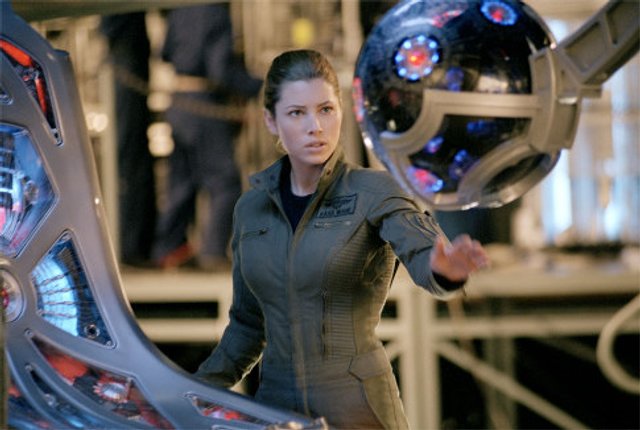
EDI is not just a UCAV; The “pilot” of EDI is a quantum computer with a highly advanced AI on a neuronal network. This gives EDI the ability to learn quickly, as the rest of the Talon squadron are initially instructed to teach what they know to it. It’s EDI’s appearance that triggers a debate about the use of robots in wars: How humans can appreciate the perils and ugliness of war, while machines can exceed human performance without being subject to the emotional baggage.
Negative impact of technology? Check. This ethical debate makes the first half of the movie a bit more interesting as we watch the EDI and Talons take on their first mission: The heads of three terrorist cells are meeting in Rangoon, and the squadron must take them out.
EDI gathers intelligence about the terrorists from satellites and even retinal scans (Ubiquitous access to information. OK.), and comes up with a way to take them out without innocent casualties. EDI is ordered to make the kill, but Gannon belays that order and makes the shot himself. While the squadron returns to the Abraham Lincoln, EDI is struck by lightning and starts to take on some human characteristics: EDI starts learning at an exponential rate, develops ethics and an ego, and even downloads all the music files from the Internet. Man-Machine fusion? Sounds like it.
Second mission: Terrorists have acquired nuclear warheads. The squadron must take them out, but the mission is aborted when it is discover the warheads cannot be destroyed without fallout causing civilian casualties. EDI attacks anyway, citing Gannon’s disobedience in the previous mission. The squadron is now ordered to escort EDI back to the Abraham Lincoln, take control of it, or shoot it out of the sky.
From there, Stealth degenerates into another cookie-cutter action movie that crashes and burns, like Purcell does when he tries to chase EDI. The debris damages Wade’s jet and forces her to return to the carrier, only to eject over North Korea, and leaves Gannon to hunt down EDI.
Nothing more to see. Well, maybe a little bit… If you’re looking for a focus on the underground, you’ll find nothing. Then again, you really can’t focus on the underground when doing Mach 5 above the Earth.
On the other hand, there is some evidence of someone trying to control society, at least the Navy anyway. Throughout the movie the carrier’s captain is seen talking on the phone to a Congressman who seems to have a vested interest in the EDI program. Also, after Gannon crash-lands in Alaska, some black-ops types try to kill him, but escapes with the help of EDI’s creator, Keith Orbit.
This is the problem in trying to call Stealth cyberpunk: The themes are there, just not enough to call it cyberpunk. And not enough to even call this dodo a “good movie.” Leave this bird on the runway, or stay within reach of the ejector button if you insist on watching.

Attention, passengers. Due to terminal crappines, this flight has been canceled PERMANENTLY! Thank you for flying Cyberpunk Review Airlines.
Don’t worry, folks. Last weekend, I came across a DVD that sounded like it was very much cyberpunk, and I have a couple of others to watch and review, with some other titles from the forums to check, so we’ll have some real cyberpunk movies for you to enjoy.
Movie Review By: Mr. Roboto
Year: 2007
Directed by: Michael Bay
Written by: Roberto Orci & Alex Kurtzman (screenplay & story), John Rogers (story)
IMDB Reference
Degree of Cyberpunk Visuals: Medium
Correlation to Cyberpunk Themes:Very Low
Key Cast Members:
- Sam “Spike” Witwicky: Shia LaBeouf
- Mikaela Banes: Megan Fox
- Defense Secretary John Keller: Jon Voight
- Sector 7 Agent Simmons: John Turturro
- Optimus Prime (Voice): Peter Cullen
SFAM Note - Change to Review: CPR now has a number of people doing reviews here. Inevitably, there will be differences over whether or not we think of something as being cyberpunk or not. In the case of the Transformers, Mr. Roboto feels that it is, but I do not (nor do many who listed comments below). I have changed the categories to reflect this (its being placed in the “It’s Not Cyberpunk” category), but the rest of the review is still Mr. Roboto’s.
~SFAM
Optimus Prime: Freedom is the right of all sentient beings.
Overview: Anyone growing up during the mid-80’s must have played with, or at least heard of, Hasbro’s Transformers and watched the animated series that began in 1984. Since then, the Transformers have attained a cult status among nerd types who dreamed of owning a muscle car or heavy duty pick-up that can transform into a kick-ass robot. Now, those fans have a live-action movie to go along with the animated 1986 movie from those heady first-generation days.
I went to see this movie, not expecting cyberpunk themes, but like Optimus Prime and Megatron colliding, BOOM! There they were, though some may say there’s a bit of a stretch for them. Like Alien, there will no doubt be some discussion about the themes and visuals and if the movie qualifies as cyberpunk.
Negative Impact of technology on humanity: Decepticons and the power-hungry Megatron will destroy Earth and the humans for the Allspark, and Megatron even shows his disgust for our species as he flicks a human away during the final battle. Also, the ongoing war between the Autobots and Decepticons could be a metaphoric warning about a possible future “robot war” on Earth.
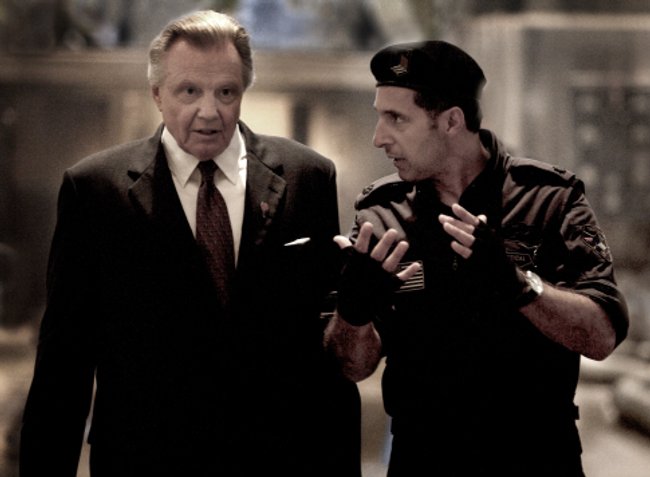
Keller: We’re facing war against a technological civilization far superior to our own! Our enemy can take any shape! They could be anywhere!
Since America’s technology was based on Megatron, leader of the evil Decepticons, it makes our cyber-present sound like it is the seed of evil, forged by evil, for evil purposes. This origin of our technology causes the Allspark to turn ordinary electronic devices into transformer robots that attack humans.
Fusion of man and machine: There isn’t the deep, philosophical aspects of Blade Runner with this theme, but there are signs of lines between man and machine being crossed somewhere between Earth and Cybertron.
At the car lot, Bobby Bolivia (a cameo by Bernie Mac) tells Spike “A driver don’t pick the cars. Mmm-mm. Cars pick the driver. It’s a mystical bond between man and machine.” Spike and Mikaela interact with the Transformers like they were real, even though they’re just CGI animations added afterwards.
The Transformers themselves act sentient, even human like, with their own personalities. Optimus Prime acts like a real leader, keeping trigger-happy Ironhide in check, sacrificing Bumblebee when he’s captured to get to the Allspark, and even plans to sacrifice himself to protect the humans and destroy the Allspark if needed. There’s even dissension among the Decepticons, especially between Megatron and Starscream in their ongoing power struggle since their animated days.
What isn’t clear is if the Transformers were created by organic beings, or used to be organics, but found a way to transfer themselves into robot bodies, or if the Allspark just created the robotic race as the opening narration suggests. I would find it interesting to hear of the Transformers’ origins (creation or evolution?). Maybe a future “prequel” will deal with that.
Control over society: There doesn’t seem to be an “all-controlling entity” present in the film… until Sector 7 enters the scene.
Sector 7 was created by president Hoover when Captain Archibald Witwicky’s Arctic Circle expedition stumbled upon a frozen Megatron to keep the find secret. They reverse-engineered the Decepticon’s technology to create the technology of modern America and her military.
Story focuses on the underground: Mikaela has a juvenile record, thanks to her father showing her how to steal cars. Not much else here. Moving along…
Ubiquitous Access to information: Early on, the Decepticons try to hack America’s military systems, looking for information on the whereabouts of Megatron and the AllSpark. After Blackout’s attack on America’s Qatar base to access the military nets, the Pentagon tries to decipher the signal used to hack the systems. One of the analysts copies the signal to a memory card and takes it to a hacker friend she knows, who succeeds.
The Decepticon Frenzy, who first appears as a boom-box, furthers the hacking cause aboard Air Force One, and succeeds in obtaining information on Sector 7 and “Project Iceman.” He then uploads a virus that causes military systems worldwide to shut down to aid the Decepticon’s attack.
Autobot Jazz: What’s crackin’ little bitches?
Sam ‘Spike’ Witwicky: Where’d he learn to talk like that?
Optimus Prime: We learned Earth’s language through the World Wide Web.
Also, both sides learn of Spike and Captain Witwicky’s glasses from his posts as Ladiesman217 on eBay.

Cyberpunk visuals and style: The desert battle with Scorponok is probably the most cyberpunk visually, with all the sand and the primitive village hosting a high-tech battle between the Americans and a killer robot. There are scenes inside the Pentagon (a cyber-romanticized version) featuring rooms of computers to gather and analyze data. Many scenes take place at night in locations like junkyards and industrial parks. In the final battle in the city, Spike runs through what looks like a long-abandoned rail station. The scenes inside Hoover Dam could be called steampunk.
Do note the color schemes between the bot sides; The Autobots have brigher colors while the Decepticons have darker, militant paint jobs.
A Long Time Ago, In A Galaxy Far, Far Away… (Oops, wrong movie… My bad.) Optimus Prime narrates the opening of the movie; How the Cube of the Allspark gave life to Cybertron (well, ANY planet it came across), and how the evil Megatron tried to abuse its power. The civil war that erupted practically destroyed Cybertron and all life on it, and the Allspark was lost for thousands of years, until it was discovered on an unknown-to-them planet called Earth.
Captain Archibald Witwicky was leading an expedition to the Arctic Circle when he stumbled upon a frozen Megatron and accidentally activated his guidance system, causing the Decepticon leader to imprint the Captain’s glasses with the location of the Allspark. The glasses are now in the possession of his great-great-grandson, Sam “Spike” Witwickey, who is trying to sell them to buy a car.
Sam and his father, Ron “Sparkplug” Witwickey, eventually buy an old Camaro that helps Sam attract Mikalea Banes, who knows her way around cars thanks to her father.

What could be hotter than a babe who knows her way around cars?
One night the car drives away with Sam in pursuit, believing his car was being stolen. The car arrives at a junkyard and transforms into a robot that transmits a signal into space while Sam watches in disbelief. The next day, the car returns and Sam runs believing the car is stalking him. Sam encounters the Decepticon Barricade, in disguise as a police cruiser, who demands the glasses. Sam’s car transforms to fight the Decepticon off, and then reveals his role as guardian before taking Sam and Mikaela to the arriving Autobots and Optimus Prime, who reveals Sam’s connection to the Allspark.
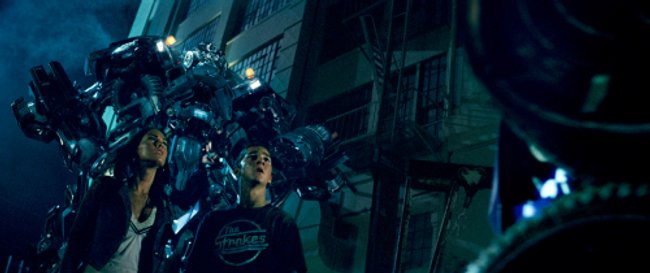
Sam ‘Spike’ Witwicky: It’s a robot. You know, like a super advanced robot. It’s probably Japanese.
What follows is a race to get to the Allspark, followed by a huge city-wrecking mech battle between the deadly Decepticons and the heroic Autobots and American military, including survivors of Blackout’s attack in Qatar.
Robot Apocalypse? We never see the death and destruction of Cybertron, but it wouldn’t be hard to imagine it based on current human events. With two opposing sides fighting over a valuable resource, whether it’s energy or the Allspark, such Armageddons are always possible whether anyone wants them or not. And with the Transformers’ civil war now being played out on Earth, the humans may become unwilling victims of such an Armageddon, especially if the Decepticons win out.
But what about robots the humans will make? Advances in robotic and computer technology have made “human-like” robots more of a possibility in the near future. Future improvements in artificial intelligence can lead to learning machines, machines that can think and act for themselves, and possibly sentience like the Transformers. At that point, our robots may take sides to be human-friendly or anti-human. That could lead to a robotic civil war that could wipe humanity out and leave the planet unlivable, while the robots take their dispute to the stars, possibly destroying other sentient worlds and life forms.
Fortunately, we’re far from that robotic civil war, and the Autobots do keep Earth protected from Megatron’s lust for power and the Allspark. The final lines in the movie are spoken by Optimus Prime as he sends an invitation to his fellow Autobots:
With the Allspark gone, we cannot return life to our planet. And fate has yielded its reward, a new world to call home. We live among its people now, hiding in plain sight, but watching over them in secret… waiting, protecting. I have witnessed their capacity for courage and though we are worlds apart, like us, there’s more to them than meets the eye. I am Optimus Prime and I send this message to any surviving Autobots taking refuge among the stars. We are here. We are waiting.
Conclusion: While geared for the toy-line fans, Transformers does offer something for cyberpunks to think about, whether it was intended or not. There’s little question that it will be this summer’s blockbuster, but some might question if it belongs in the Parthenon of cyberpunk movies.
All I can say is: Do watch it and see if you also notice the cyberpunk themes as I did. It’s OK, it’s a pretty good robot action movie.
Movie Review By: SFAM
Year: 2005
Directed by: Clive Cohen
Written by: Clive Cohen
IMDB Reference
Degree of Cyberpunk Visuals: Low
Correlation to Cyberpunk Themes: Low
Rating: 2 out of 10
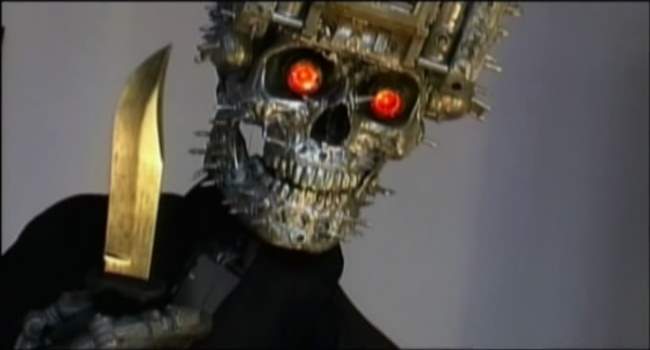
Overview: So you’re really into big breasted chicks getting gored by robots, ey? If this is the variety of fetish porn you’ve been hankerin for, then Exterminator City is probably an automatic buy decision. One word of caution - you aren’t really getting robots, you’re getting a cheaper version of the old Muppet’s skit, Pigs in Space-style robot puppets. Basically you get shiny plastic robot heads (are these supposed to be metal?) with movable jaws, mounted on dressed clothing racks. A real person wearing gloves is shemping the hand movements, while the lower jaw goes up and down to mimic talking (robots MUST have working jaws, right - I mean who would believe that robots would have speakers embedded in them!). Outside of this small, select market segment of geeks lusting after robot puppets bloodily whacking big breasted chicks off-camera, Exterminator City will probably get a hearty “WTF” from everyone else.

In the one intentionally funny moment of the film, Julie Strain dies by being bludgeoned with an Oscar statue (which occurs off-camera of course, as I don’t think any of these girls even knew they were in this flick until after it was released).
The Story: In the near future (2027), the population is solely comprised of deranged robot puppets and big-breasted chicks who can’t stop rubbing themselves. Worse, these chicks don’t seem to be able to keep clothes on. Robot puppets handle all the work in society, while the bare-breasted chicks hang around their apartments waiting to get randomly gored in some bloody, off-camera moment. While this doesn’t seem like all that successful a society on the face of it, we can only wonder what happened in the previous 20 years that led to this!
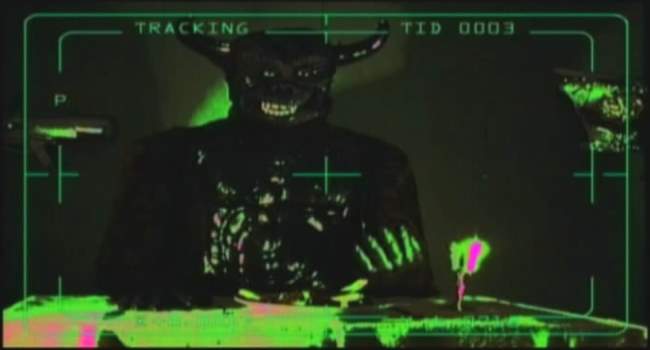
Unfortunately, the poor pesticide robot puppet has nightmares about hell. His response to the rubber demons? He treats them like big breasted chicks and chops them up!
Enter our star - the deranged robot exterminator puppet. For his day job, he’s supposed to be killing the large rubber cockroaches that keep frequenting the bare-breasted chicks’ apartments, but due to a eeeevil after-market robot parts salesman, now he looks at these chicks as bad girls who need his special services. But this is no ordinary deranged robot exterminator puppet. He’s also a master hacker and top micro-electronics expert - he can create his own robot bugs that break into bare-breasted chick apartments! Better yet, he can instantaneously rip out a wall in the exact size of his human-sized robot puppet body, but can also shrink small enough to sneak through the small air ducts that permeate every big-breasted chick abode.
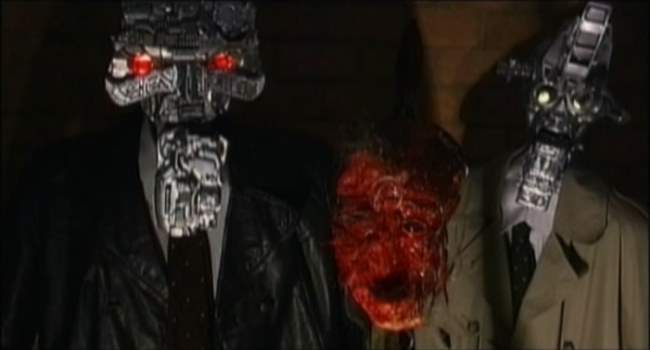
Exterminator City Dialogue Moment:
Police Detective Robot Puppet: “I knew this girl.”
Mad Psychologist Robot Puppet: “You did?”
Police Detective Robot Puppet: “I put her away on three counts of drug violations.”
Mad Psychologist Robot Puppet: “I’d say she’s cured.”
Meanwhile, a bumbling police detective robot puppet is on the case. He may seem useless but he’s sure he’ll catch the bad guy. What’s his strategy for success? He hangs out with a mad psychologist robot puppet (who used to have the pest control robot puppet as a patient) and discusses each gruesome murder after it takes place. Usually they like to mount the most recent dead, bloody and now skinned big-breasted chick on a poll between them (see above) so they can discuss the specifics of her death.
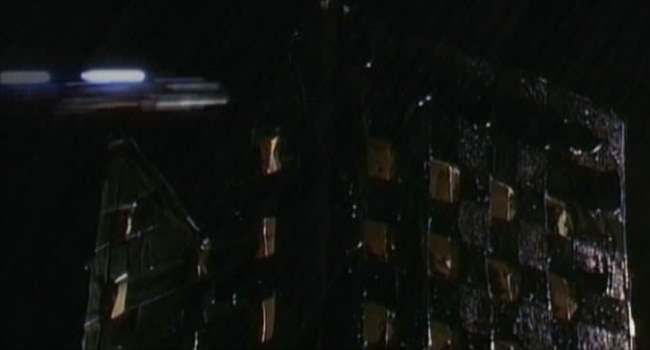
This is the “Blade Runner” police HQ. Yes, in fact it does look like a cardboard box with squares cut out, covered with overlapping strips of spray-painted construction paper. But at least the light stays on, and the zippy things, which are supposed to be the police car, wiz by fast enough that you never get a good look at them.
The Pacing: The pacing in Exterminator City mimics standard porno movie. There is a brief, incoherent beginning scene, followed by a series of action shots that are broken up by brief, incoherent interludes. In this case, robot/bare big-breasted chick slasher porn comprises the action shots. The ending resolution ending scene bookends the front in that its also an incoherent moment that nobody cares about. Between each slasher porn sequence, he interlude shots in Exterminator City always start off with a fast light-car zipping past the cardboard building above followed by an inane puppet dialogue moment. Most often, the dialogue moment involves ridiculous conversations (or sword fights) between the detective robot puppet and the mad psychologist robot puppet, but sometimes we get a “hell” fantasy from the mind of our anti-hero pest control robot puppet. I’m guessing Cohen was trying for a “Space Ghost Coast-to-Coast” type feel for the interludes, but this is just a guess (he failed).

You can tell this scene is still early in the movie because the chick is hawt, can scream well and eventually takes off her top. Later on we get semi-ugly chicks, chicks that can’t scream or worse, ones that won’t disrobe!
Where Did the Big Breasted Chick Footage Come From?: While I know nothing about the making of this movie, I’d bet money that director Clive Cohen has never met any of these chicks. Far more likely, I’m guessing that Clive contracted with some cheesy modeling agency that had pre-made clips of all their “actresses” in a horror-scream type setting. In NONE of the 20+ bare-breasted chick killing scenes do we get any sense that they have a clue what’s going on. Basically, each of them are in some kind of current-day house setting (working out, taking a shower, watching TV, etc.). After a few seconds of relaxation, they look toward the camera and start screaming. The scene then cuts to the deranged robot puppet axing, chopping, chainsawing or bludgeoning through fake skin of some kind. Julie Strain is the only one given more than 40 seconds screen time (she gets like 3-4 minutes). What’s truly funny about this approach is how bad these chicks really are - not only in acting, which is expected, but in screaming. Some are truly horrid.
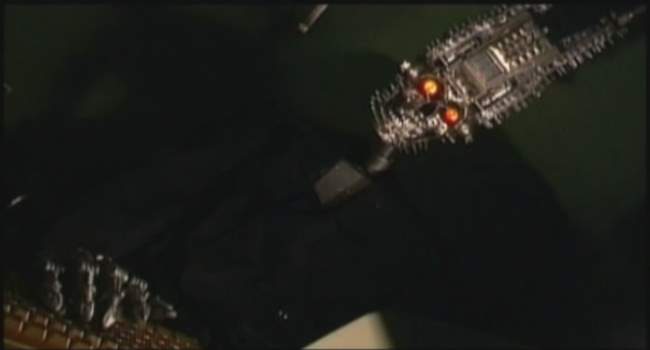
Robots need keyboards to hack into the police database!
Exterminator City Dialogue Moment:
Police Detective Robot Puppet: “He ain’t coming back here no more”
“What makes you so sure?”
Police Detective Robot Puppet:”He had a trace on our trace. He knew we were watching him.”
“So he won’t hack the system again?”
Police Detective Robot Puppet: “He don’t have to. He downloaded all files on route to the kill.”
“So no stopping him now?”
Police Detective Robot Puppet: “You must be sooo proud.”
“No detective. I am not.”
Police Detective Robot Puppet: “I’ll get him”
“How can you know that?”
Police Detective Robot Puppet: “That’s my job, bitch.”
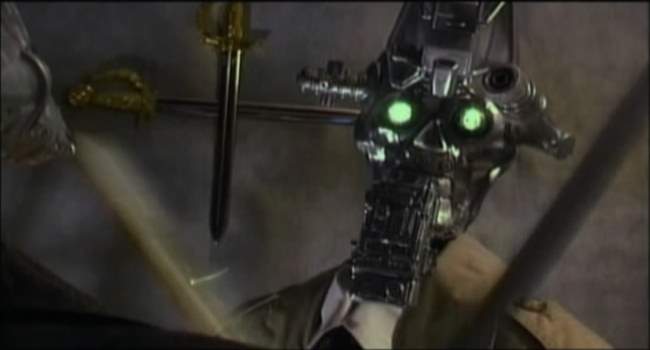
And then a random plastic sword fight breaks out between the police detective and the mad psychologist. Why you ask? Um, don’t ask why…Incidentally, in the close-ups of both puppets, they each have those crossed swords behind them (apparently the walls move quickly to keep the crossed swords in the shot). I think this is to help the viewer recognize that they are having a sword fight.
The Bottom Line: Often when watching a truly horrid flick, you find yourself wondering, “What did this director really want to accomplish?” In this case, its pretty clear - Cohen wanted to make robot slasher porn. Unfortunately he didn’t have a budget, so he settled for robot puppet slasher porn that occurs off-screen. As bad as this “movie” is, I must say that a good number of the big-breasted chicks look really good. And I suppose there’s something to be said for having massive quantities of big breasted chicks to make up for the monstrosity that is this movie. I honestly doubt that anyone besides Cohen actually worked this thing.
But give Cohen some credit: like any good porn movie he knows to keep the better action shots near the beginning, as most will tire of the movie long before the ending comes. As we get to the last third of the movie, the women are either uglier, really awful screamers or won’t take off their clothes. For this organization philosophy, I’m giving Cohen an extra star in my rating (which brings my review to a grand total of 2 stars!). Unfortunately, this approach also means that near the end, we’re stuck with a higher dose horrid dialogue between the detective and psychologist, along with the occasional rubber hell monster. Bottom line, if you do have a hankerin for big bare-breasted robot puppet slasher porn and need to see this, don’t feel guilty in turning it off just after the halfway point.
Movie Review By: SFAM
Year: 1984
Directed by: Michael Crichton
Written by: Michael Crichton
IMDB Reference
Degree of Cyberpunk Visuals: Medium
Correlation to Cyberpunk Themes: Medium
Key Cast Members:
- Sgt. Jack R. Ramsay: Tom Selleck
- Officer Karen Thompson: Cynthia Rhodes
- Dr. Charles Luther: Gene Simmons
- Jackie Rogers: Kirstie Alley
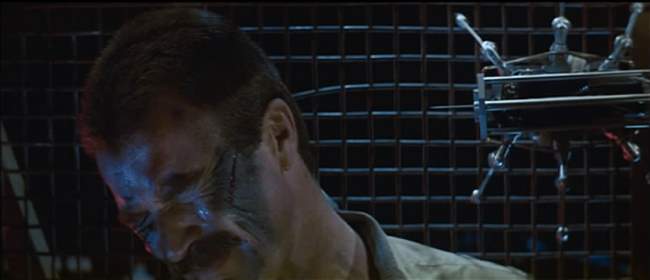
Overview: Sometimes cheese can be enjoyable. Michael Crichton’s movie, Runaway, is filled with too many straight-up Hollywood clichés to be taken seriously, but it’s still fun. Maybe it’s just because I’m a Die-Hard Magnum PI fan, or perhaps I love to see Gene Simmons’ evil glare. Runaway has some fun ideas, but the movie’s not great. It’s one of those movies where the bad guy can magically get anywhere and automatically knows everything. It is more fun than it deserves to be though.
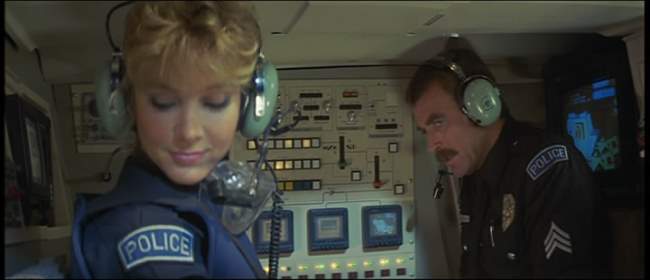
The Story: In near-future, society has taken full advantage of micro-electronics and robot technology. Many basic jobs, such as taking care of corn fields, are now carried out by robots. Robots even fulfill surrogate nanny roles for children stuck at home. In this world, Sgt. Jack Ramsay (Tom Selleck) is a specialist on disabling malfunction robots. Ramsay and his new partner, Karen Thompson (Cynthia Rhodes) get enmeshed in a series of incidents where robots have gone wild, sometimes with deadly results.
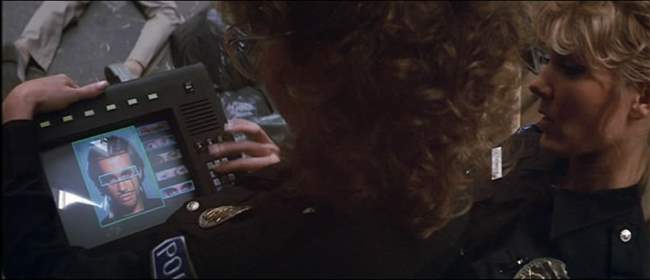
In investigating the faulty robots, they find that they have been modified with a special “assassin” computer chip that turns normal robots into man-killing death machines. The trail leads to Dr. Charles Luther (enjoyably played by Kiss rock star, Gene Simmons), and over-the-top evil genius who will stop at nothing to develop and sell these chips to the highest bidder. Ramsay and Thompson stop Dr. Luther by intercepting a chip delivery from his girlfriend, played by Kirstie Alley, and capture Luther’s chip design template for making new copies.

As the plot thickens, Dr. Luther brings out his toys. The most impressive gadget which the movie is most known for are mini-spiders that can jump 6 feet in the air, and deliver shots of acid. Luther also has heat-seeking bullets that can be targeted to an individual body heat profile, and mini-homing bombs on wheels called “lock-ons.” Things get tense when Luther kidnaps Ramsay’s kid to exchange for the chip template.
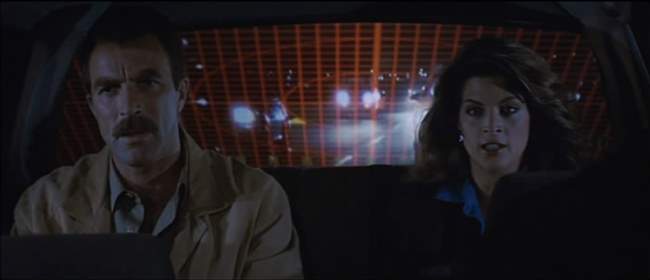
The Acting: The acting is nothing special in Runaway, and certainly lacks originality in any of the assigned roles – virtually every character is cookie cutter Hollywood fare. Tom Selleck basically plays his Magnum PI character, so if you like that guy, you’ll probably like his performance here. Cynthia Rhodes plays a shallow but cute sidekick who wants nothing more than to get it on with Selleck. Kirstie Alley’s role consists mostly of looking hawt. With that said, Gene Simmons is the really fun one to watch. All he really does well is “look evil” but he does this so well! This coupled with the fact that Simmons’ character is almost magical – he always knows where everyone is, and can infiltrate any location including a busy police station to log on to Ramsay’s computer with virtually no disguise. Again, we’re not talking high quality here, but it is fun.
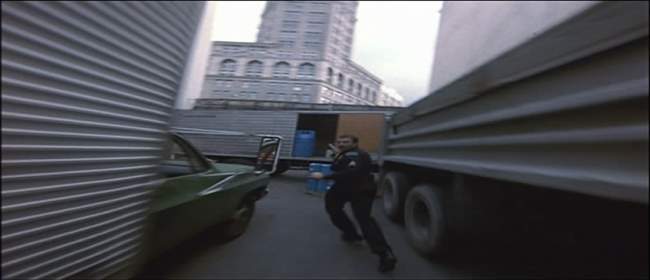
The FX: Runaway provides us with a number of low-budget cyberpunk toys, but probably the best effect employed was the use of the fish-eye lens to give us the perspective of the missile bullet. This simple camera effect makes the heat-seeking bullet far more believable than it should. But it’s the spiders which everyone recognizes. For some reason, these seemed far more believable to me when I watched this movie in the 80s. Now, they just sort of seem to sit there and wiggle. Still, when watching the ending sequence in Matrix Revolutions, where Neo walks through the tunnel with the high-quality CG spider-bots traveling everywhere, I was reminded of Runaway. So in that sense, Runaway’s toys have outlasted the movie itself.
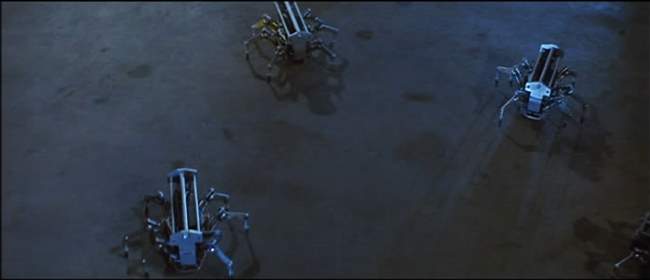
Evil Chips: I’m not really sure what this even means, but Runaway is predicated on the idea that “assassin” chips can be made. These chips provide an alternate instruction set which appears generic enough to work on virtually any robot. In looking at this, the idea reeks of Hollywood cheese. Wouldn’t it be cool though if someone could design an instruction set that could self-organize its commands based on its environment? I suppose Java does this in some ways in that its platform independent, but robot independent seems a bit more complicated.
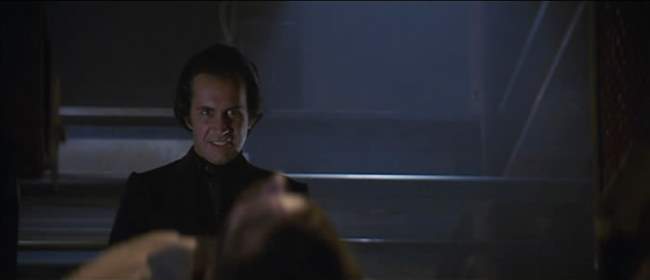
Dr. Luther is just another Dr. Evil: It’s amazing how a character can change the world of film. Ever since Austin Powers’ Dr. Evil character came onto the stage, it’s virtually impossible to take incoherent evil guys seriously. The moral of this story is had Dr. Charles Luther just paid off his henchmen, he would have escaped scott free. But since he had to come up with craaazy deaths for them, our hero had to come to the rescue.
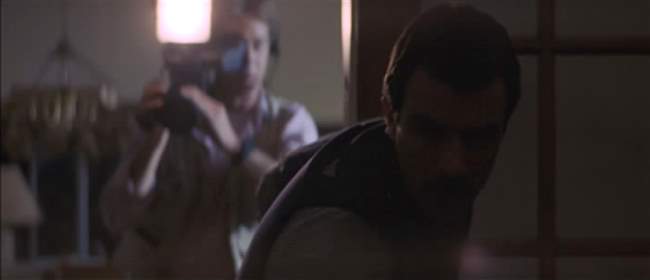
Full and Free Access by the Newsies: In Runaway’s future, the news organizations have the right to wherever they want, whenever they want. So much so that they’re allowed access during a police operation to save an infant from a crazed robot. This comes off as being fairly silly in the movie, as its hard to imagine them ever getting this type of access. This is more an indication of the perception folks had of news organizations in the 80s. How time changes things. Now the perception is that news organizations pretty hang out to wait for their stories to be hand-fed. They still excitedly arrive at standoffs and the like, but outside of a few brave souls who prowl the streets outside the green zone in Iraq, it’s hard to imagine news organizations today even bothering to investigate the most obvious of events.
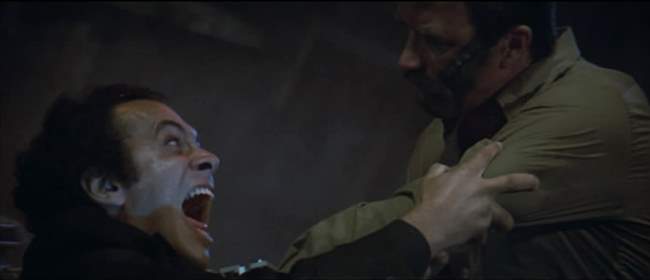
The Bottom Line: One has to wonder how a decent story teller like Crichton ends up taking some interesting ideas on technology and society and embedding them into a cookie-cutter Hollywood storyline. Things certainly happen in the production so who knows. Watching Runaway, you get the feeling that this should have been a better flick. But while the movie isn’t great, the spiders are fun, as is Gene Simmons’ glare. And if you’re a Magnum PI fan, chances are you’ll like it even better than one of the weekly episodes.
Movie Review By: SFAM
Year: 1987
Directed by: Katsuhito Akiyama, et. al.
Written by: Katsuhito Akiyama, et. al., Toshimichi Suzuki (story)
IMDB Reference
Degree of Cyberpunk Visuals: High
Correlation to Cyberpunk Themes: Medium
Key Cast Members:
Sylia Stingray (voice): Yoshiko Sakakibara
Priscilla S. Asagiri ‘Priss’ (voice): Kinuko Ômori
Linna Yamazaki (voice): Michie Tomizawa
Nene Romanova (voice)Akiko Hiramatsu: Akiko Hiramatsu
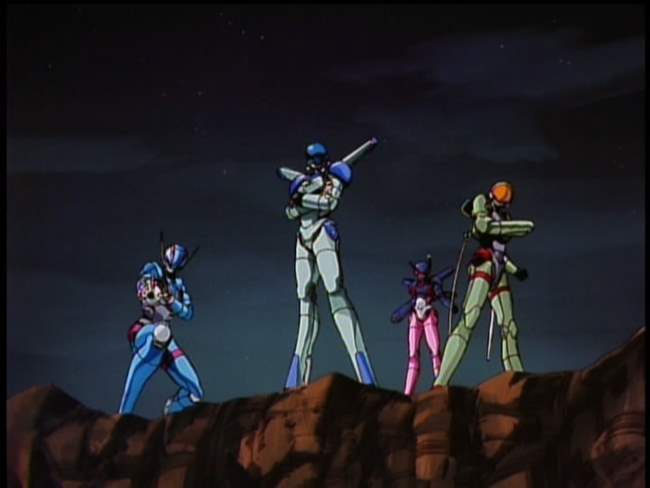
Overview: Bubblegum Crisis (BGC) is one of the all-time classics of cyberpunk animation and anime in general. With a team of hawt chicks kicking butt in cute mecha outfits, while upbeat songs play in the background, Bubblegum Crisis has developed a franchise and staying power that few titles can match. Quite a number of sequels have been created as a testament to this. BGC is influential in a number of ways. Not only has its character animation been widely imitated, BGC was one of the first shows brought over in the US with subtitles. Overall, while there are some dark moments, the original BGC is an action-oriented, mostly light-hearted affair.
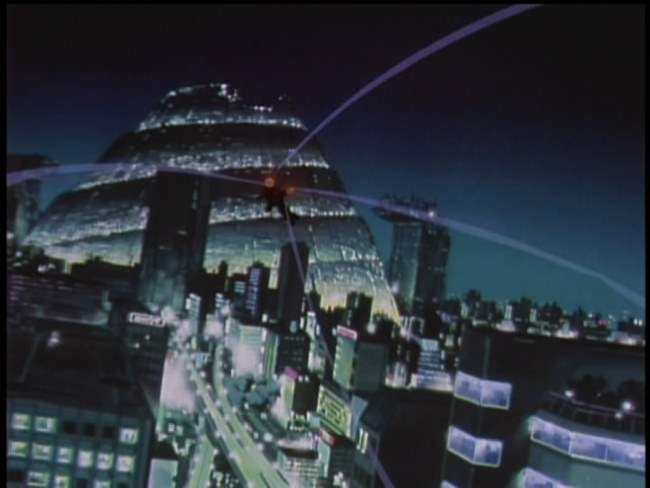
The Story: In 2025 an earthquake destroyed Tokyo. With the assistance of androids and robots created by the omnipresent and ever-powerful Genom corporation called boomers, Tokyo is rebuilt as Mega-Tokyo. Unfortunately, like Bladerunner, sometimes the boomers get out of line, often in fact. Boomers can appear human, but often this is just a fascade for a far more dangerous bio or mecha beast that can break-through the skin. In response to this danger, the authorities have created an under-funded agency called the AD Police, who’s primary mission is to handle boomer incidents. Unfortunately, often the boomers are too strong for the police to handle.

Enter the Knight Sabers. Headed up by Sylia Stingray, the billionaire daughter of the former Genom Corporation scientist who invented boomers, Sylia has advanced the research on her father’s mecha hard suits, and has recruited a team of three other hawt action chicks who, along with Sylia, comprise the Knight Sabers. All of them have secret identities. Priss is a pop singer, Nene is a hacker who works as a dispatcher at AD Police HQ, and Linna is an aerobics instructor. But all four of them have trained to become mercenaries extraordinaire in defense of boomer incidents.
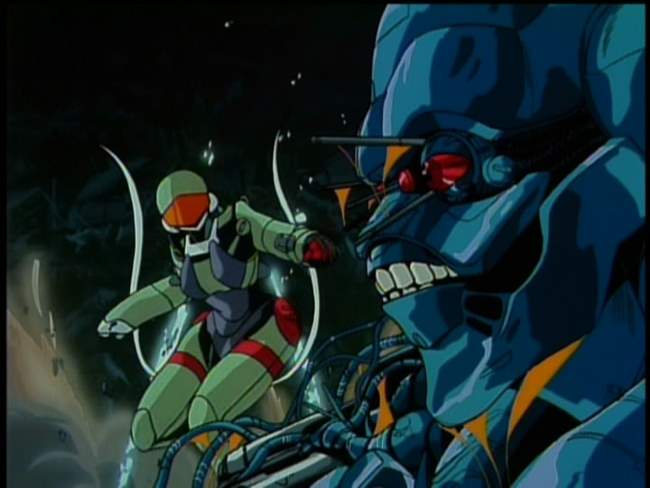
Unlike most OAVs, BGC is designed with each episode being as self-contained story. While many of the stories string together, there are no cliffhangers here. Some of the episodes have at least a modicum of intrigue, but generally, when it gets right down to it, the goal is for the knight riders to kick some boomer ass. Action dominates, which works considering the relatively short time allotted to each story (up to 50 minutes). As the series continues, most of the storylines deal with the Kight Sabers foiling attempts by the Genom corporation to secure even more power. A few of the episodes have complex storylines, but the majority are straightforward, with evil genius types (boomer or human) directing boomer machines who create death and destruction.
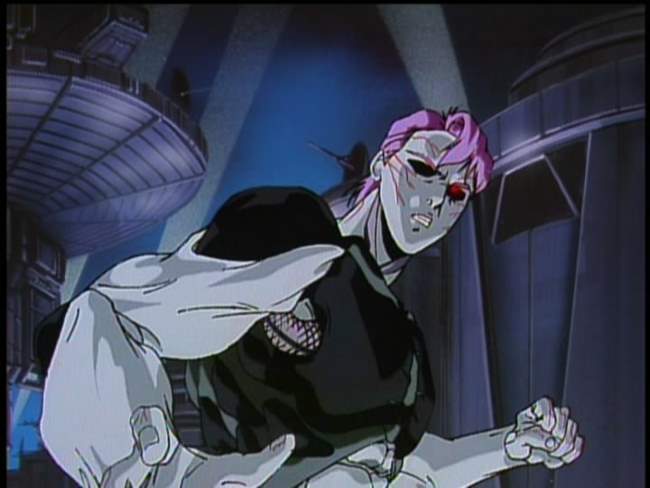
For me, my favorite episode is Episode #5, where a two unique bio-based sexroid boomers who need blood for sustenance escape from escape Genaros, the SDPC’s orbital supply station for humanity’s moonbases, and make their way to Mega-Tokyo. The episode is far more complex than most, and touches on similar issues to Blade Runner, in that these Boomers just want to be free to live. Most of the boomers in BGC (other than the major villains) don’t really exhibit any form of sentience, but the ones in this episode (and the continuation in #6) are sentient and multidimensional.
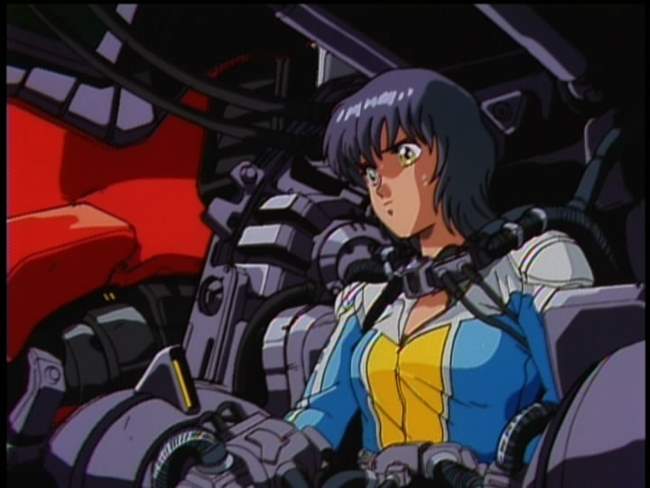
Influential Visuals: Along with Akira, BGC animation has been very influential in transforming anime to the popular style we see today. Characters with overly large eyes and the familiar facial styles are on display in BGC, as are a bevy of experimental looks and styles. The look of anime changed dramatically from the late 80s to the early nineties – BGC will always hold a place in history due to its influence on this change.
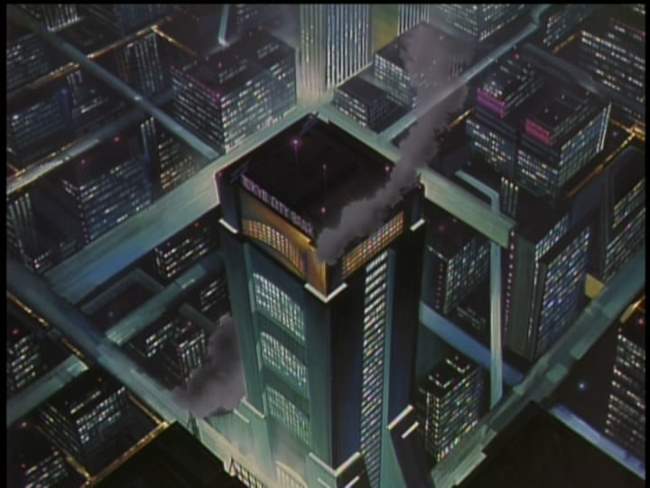
Mega-Tokyo: BGC took the Blade Runner city visuals and applied them to anime, which was then imitated by most of the shows that followed. The cityscapes are modern looking with a blue background, with various green and red highlights. Grays and blues are shown in abundance, with occasional orange and red daytime scenes. Most of the shots are from above, focusing on the overall city-scape, but there are a number of ultra-modern buildings including the Genom’s Tower (which looks like the Blade Runner Terrel Corporation building) and the AD Police building – same as Blade Runner as well.
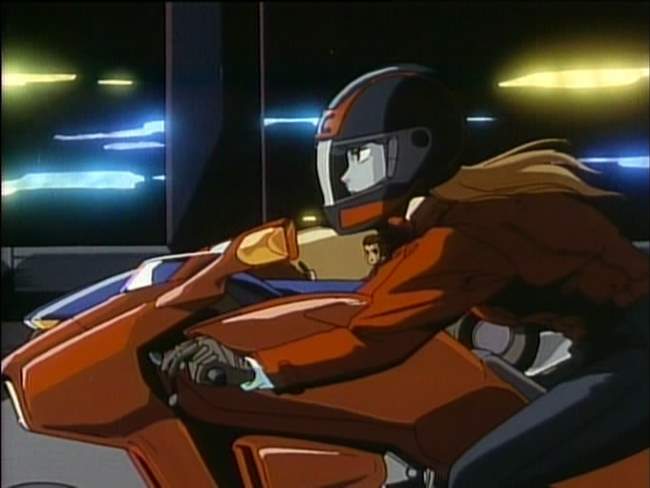
The Action: By far the best quality animation BGC brings is in their action sequences. While the rest of the series is really not very special, the action sequences are very well done. We get a variety of effects and perspectives that driving the relatively quick-pacing. In many of the scenes, the backgrounds show a variety of methods to enhance the speed and action. Often BGC engages in mecha-style battles (many of the bad-guy boomers are variations on mecha characters), but these are different from some in that the Kight Sabers are in nimble, tight-fitting suits, which increases the speed of the action.

The Music: Very few OVAs have music as recognizable as BCG. BGC is known for being one of the first (or at least one of the most recognized) to essentially embed music videos into their action sequences. The songs play a big part in Bubblegum Crises, with a large number of the action sequences and dramatic moments overlaid with song accompaniment. Almost twenty years later, this innovation has blossomed and morphed into what we see with FLCL for instance, where entire sequences are purely videos intertwined with the story.
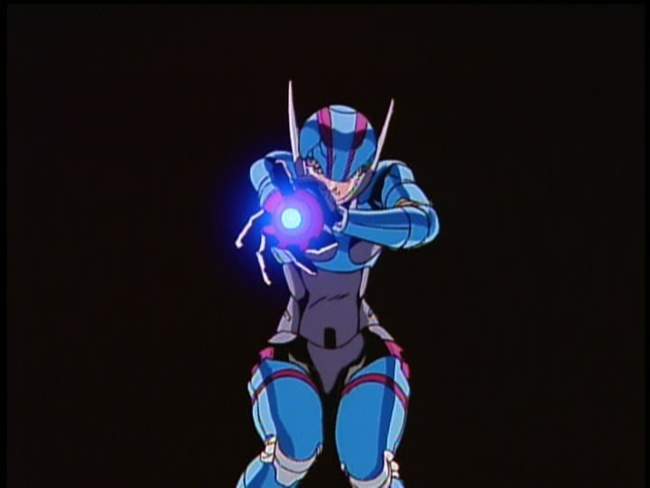
The Bottom Line : While I’m generally not too excited about mecha anime (this is purely a preference on my part, and not a knock on mecha), I find BGC quite enjoyable. BGC is more like an earlier version of GITS SAC in that the focus is action first, and philosophy second. While a few episodes do explore what it means to be human, in all but a few cases, this is usually done in the context of a fairly light plot and intense action. Perhaps the philosophical aspects would have been highlighted had the series continued, but for legal reasons, BGC was cut short at only eight episodes. On pure enjoyment I’d probably rate the series a 7 out of 10, but due to its significant influence on anime and cyberpunk I’m giving it an extra star.
Page 2: More Screencaps —>
~See movies similar to this one~
Movie Review By: SFAM
Year: 1962
Directed by: Wesley Barry
Written by: Jay Simms
IMDB Reference
Degree of Cyberpunk Visuals: Low
Correlation to Cyberpunk Themes: Very High
Key Cast Members:
Capt. Kenneth Cragis: Don Megowan
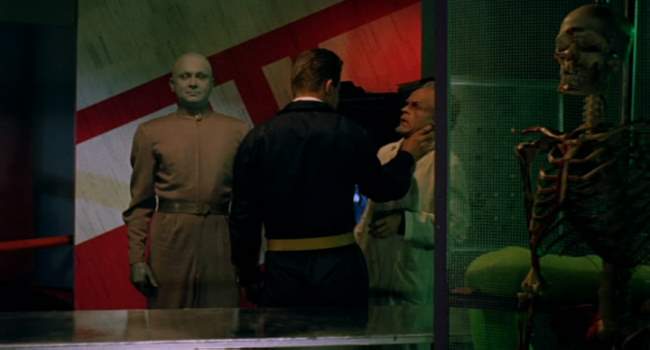
Overview: It’s a rare instance when we find a movie that has all the trappings of a “B” SciFi shlock-fest – one with an overly cheesy name, a DVD cover advertising the movie as a classic drive-in flick (as was the original marketing art), one which has the standard “B” movie high-pitched moaning female chanting alien vocal track duing the credits and a creature-feature font typeface for its title – but in fact isn’t. Creature of the Humanoids practically screams “low-budget, exploitative SciFi crapfest” but…isn’t. Instead, after digging beneath the voluminous trappings of “B” cinema, we find a very intelligent, but low-budget movie – one which in 1962 has captured a good number of the cyberpunk themes that would dominate literature and movies twenty years later. Contrary to the DVD cover, which combines Creation of the Humans with War Between the Planets (which is pretty much what you think it is), this is a slow-paced, thinking person’s movie. Said another way, I’d probably be damn bugged if I had taken a date to see this at a drive-in, but as an intelligent movie for CyberpunkReview, it works fine.
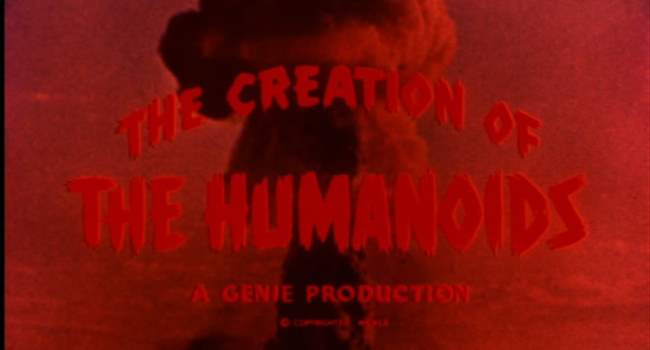
The Setting: A nuclear war has taken place, resulting in the extermination of 92% of the human race. Those that remain are riddled with radiation poisoning, leaving very few couples who can create viable offspring. To keep civilization running, the remaining humans significantly ramped up their production of robots, which now number almost a billion in total, and handle most of the mundane tasks of society. Over time, advances in AI and automation have created a “race” of robots that have become sentient, and even more capable than their human counterparts. Because humans couldn’t stand working next to machine-looking things that seemed smarter than them, robots began being constructed to emulate humans. Now, 20% of all robots look humanoid in nature. However a backlash has formed - a hate group called the “Order of Flash and Blood” is pushing for the ban on all humanoid-looking robots. Because of a backlash by many humans, these robots can only look 70% similar to humans.
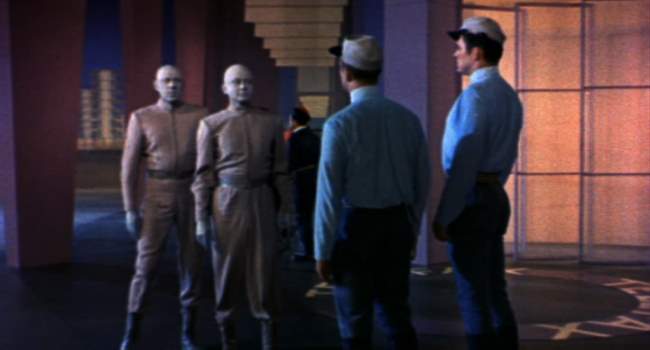
The Story: Capt. Kenneth Cragis (Don Megowan) is a leader in the Order of Flesh and Blood, the robot hate group. While on monitoring the activity of “clickers,” a derogatory term for robots, he notices some suspicious activity entering the robot shrine, a building off-limits to humans, which contains the central AI program that most robots now take direction from, and practically worship. In getting Flesh and Blood members to storm the shrine, they find a robot that looks almost fully human (96%) who has just killed a rogue scientist. As robots are all programmed to follow what essentially are Asimov’s three laws of robotics, this constitutes the first instance of a robot killing a human. Cragis sees this as an opportunity for the order to finally break-through and convince the human leadership of the righteousness of their cause. But in analyzing the human-looking robot, they discover something horrifying – it turns out that this robot actually “thought” he was a person, and appeared to have been created by taking the essence of a person recently dead, and replicating them inside of a robot.
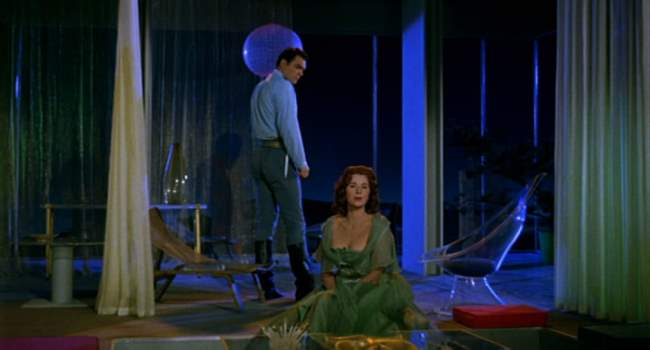
Cragis also has another dilemma, his position in the order is now threatened, as its come to light that his sister has recently entered “rapport” with a robot named Pax. When in rapport, the robot and human essentially share the same mindset – everything his sister desires is instantly understood by the Pax and her needs are met. They are essentially soul mates. Cragis and his sister are on complete opposite sides of this issue, and there is no way for him to convince her otherwise. But things go from worse to weird when Cragis, and his newly found love (Erica Elliott) discover a truth about themselves that will shake the foundations of humanity.
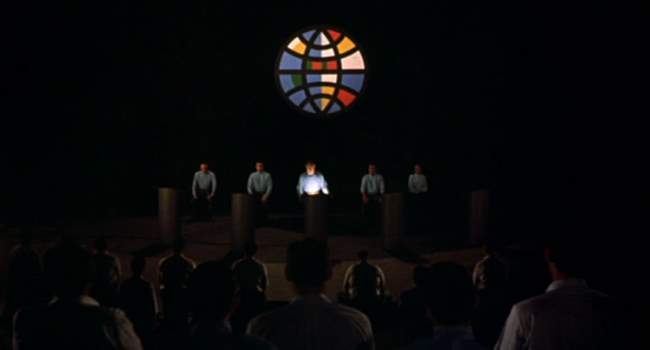
The Production Values Suck: If I were grading Creation of the Humanoids based on production values alone it would be grateful to achieve even a three-star rating. From a production value standpoint, this movie is poorly made. The very few sets that exist look like warehouse sets quickly done up with extra junk from other SciFi movies and the only music accompaniment used everywhere (including love scenes) is the eerie “alien ship is coming” sound. The FX, especially of the robots are very poor, consisting primarily of bald-hair pieces and green makeup. Aside for a few of the leads (Don Megowan, the most important character is decent) is sub par at best. From a production value standpoint, Creation of the Humanoids seems far better suited to a play than a movie. If fact, I wouldn’t be at all surprised if this was the original intention of Jay Simms’ script. The DVD treatment, which provides a far better than expected transfer, essentially tries to mimic a drive-in movie experience. This is annoying it that there is no chapter feature. You are forced to click through the upfront stuff, the first feature, and the intermission crap to even get to Creature of the Humanoids.
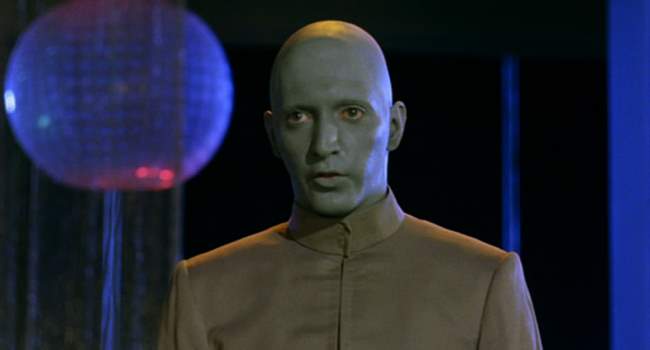
If a Man Loses His Leg, Is His Soul Affected? this is the question posed by Creation of the Humanoids. If one answers that the soul is not affected, the follow-on thought is what if the whole body was replaced but that the essence that is “you” survives in an android shell. Do you still have a soul? If not, when did you lose it? Creation of the Humanoids provides us a world where humans are quickly becoming extinct, and where their salvation is going to be a situation where their personalities – all that makes them unique – are transferred into robotic bodies. They even will still be able to procreate, after a fashion. So the larger question this movie finally poses is: in this completely post-human world, does humanity still exist?
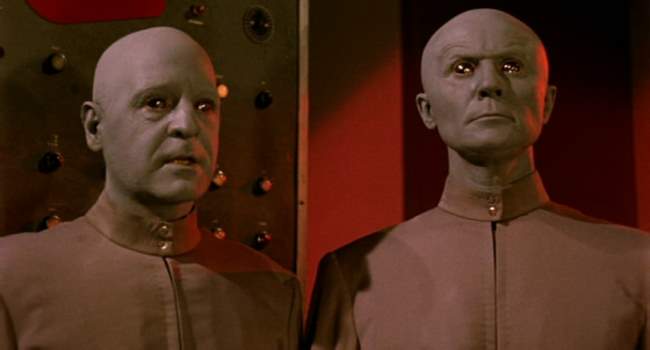
Replicants in Years Past: While Blade Runner is most often credited as having the definitive replicants, clearly this idea has been around for a lot longer. In Creation of the Humanoids, robots that are 96% human capability are created by taking a recently diseased person (within six hours of death) and extracting all that is unique about them (their memories, learning, skills, philosophy, etc.) and inserting it into a special thalamus chip to be integrated into a robot’s cerebral cortex processing unit. In doing so, they wipe all memory of the human’s last moments (their deaths). The end result are robots that still think they are human. For all times other than between 4:00 – 5:00 am, the robots act completely human. But during that one hour, they remember who they really are and report back to the robot society.
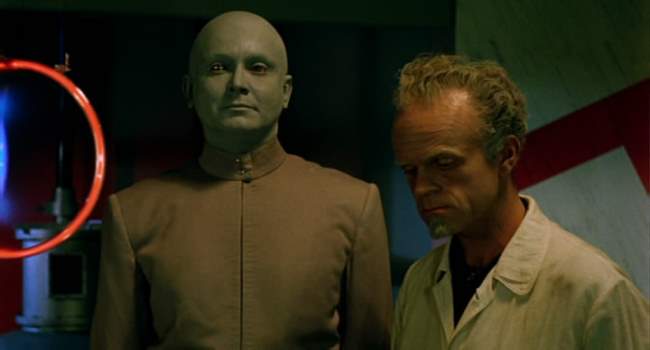
Asimov’s Laws Were Already Being Followed By 1962: Creation of the Humanoids gives us a glimpse of the incredible influence that Asimov’s “I, Robot” a mere 12 years later. The Robots in this already adhere to the laws, and have already worked out methods to break them. Robots must never harm other humans, and must always work to serve their best interests. Yet, unfortunately, humans don’t always know what is in their best interests, and thus, the robots must become subversive to meet this law.
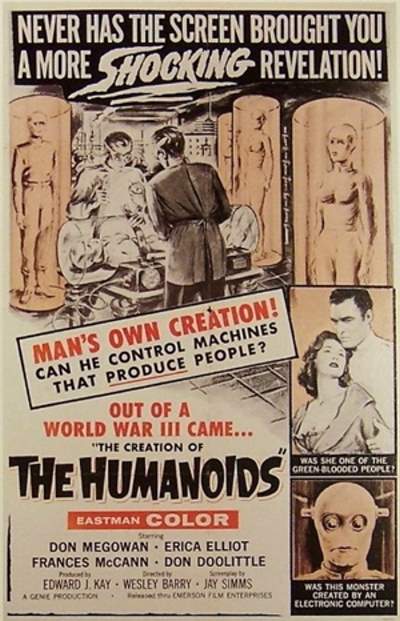
Clearly, this movie was created and marketed as a creature-feature. One can only imagine the disgust that writer Jay Simms had to this bastardization of his overly thoughtful script.
When Robots Control Humanity: One of the more interesting arguments Creation of the Humanoids engages in is the question of what life will be like if and when the robots control mankind. In this movie, the robots have already gained control of who is in gets elected, even though the regular populace has no clue this has occurred. The robots also engage in subtle methods of mind control and brainwashing, all to make the populace more accepting of robot rule. Because the robots believe humans do things not in their best interests, it becomes their duty to “manage” human life. The question is then raised whether humanity will still want to pursue knowledge and self-betterment – after all, what’s the point if everything you even think you might want is automatically provided for you? The answer is rather depressing here – it has already happened – that we’ve just now realized it is almost irrelevant.
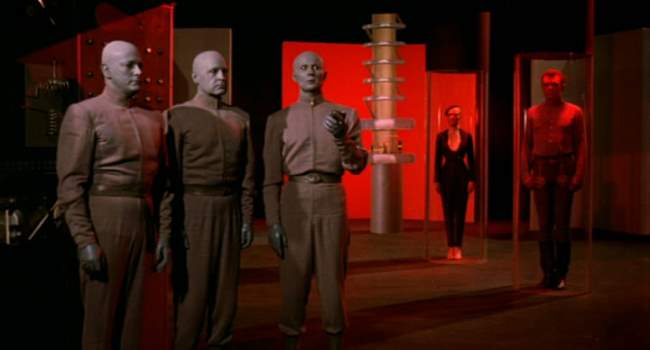
The Bottom Line: While the production values suck, the story in Creation of Humanoids is both complex and interesting. Many ideas presented are wonderful grist for later books and movies. As long as you realize that the production values in this flick make the old Dr. Who series look high-tech, you’ll probably enjoy it. While it is very slow-paced and only has about 5 separate scenes, the ideas presented are interesting enough to keep your attention. Aside for the commentary on race relations (obviously a big issue in the early 60s) Creature of the Humanoids makes us think through some interesting notions of post-humanity. While I’d give it 3 stars for its production values, I’d give it an 8 star rating for its story. This won’t appeal to everyone, but is certainly good enough that it shouldn’t be forgotten.
~See movies similar to this one~
Movie Review By: SFAM
Year: 1995
Directed by: Stephen Norrington
Written by: Stephen Norrington
IMDB Reference
Degree of Cyberpunk Visuals: Medium
Correlation to Cyberpunk Themes: Low
Key Cast Members:
Jack Dante: Brad Dourif
Hayden Cale: Ely Pouget
Sam Raimi: John Sharian
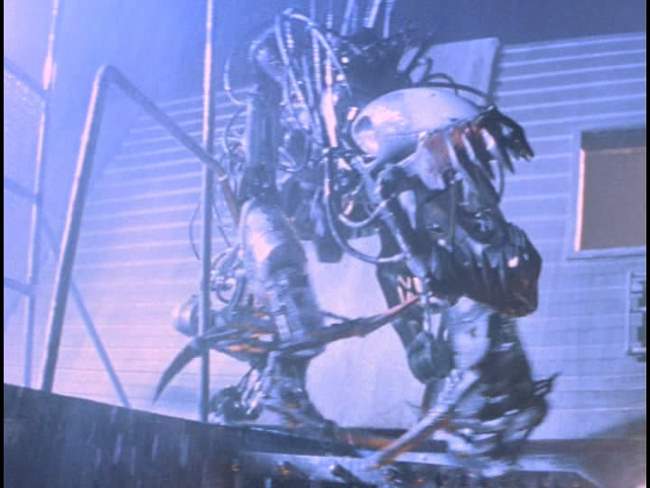
Overview: In yet another of the Alien/Terminator copycat movies, Death Machine is a low-budget, poorly thought out shlock-fest that tries to dazzle you with a largely incoherent in-depth plot and over-the-top acting. While another virtually unknown British Director, Richard Stanley, scored big in a similar but far more original copy-cat movie, Hardware, Stephen Norrington’s Death Match just doesn’t cut it. These types of movies live or die on the overall atmosphere and the quality of the fear the creature engenders. While Hardware excelled on both counts, Death Machine falls woefully short. Worse, Death Machine makes a lame attempt at humour by naming all the bit players with the names from the movies Norrington stole plot bits and visuals from (John Carpenter, Scott Ridley, Weyland, and Yutani)
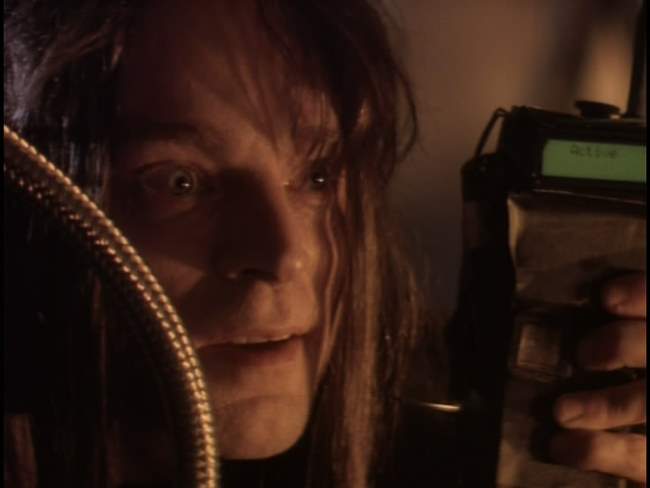
The Story: In the near-future, the evil Chaank Armaments corporation has engaged in a number of shady, classified project that have resulted in dissapearances and potential deaths. Public outcry has gotten out of hand, so for damage control, they bring in an upstanding principled new chief executive named Hayden Cole (Ely Pouget), a hot chick with a porn past to inspire trust and confidence amongst the masses. As she delves into things, it’s clear that the board of directors wants nothing to do with providing full disclosure. Why? Because there is an evil genius mad scientist in the basement named Jack (Brad Dourif), who has the dirt on everyone, and is hard at work at making a death machine to keep everyone in line. Additionally, Jack has created a process for transforming humans into killer-cyborgs. Unfortunately, this process is flawed, and all the cyborgs end up dying.
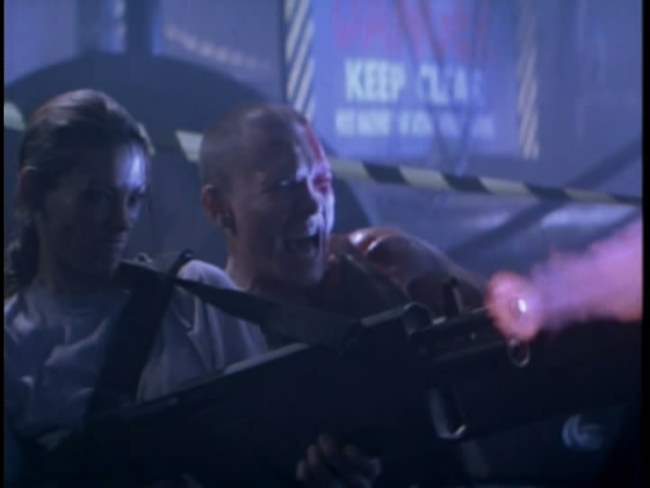
Eventually, the hawt chief executive challenges Jack, and all hell breaks loose. She and a few others become trapped in the building with some would-be amateur freedom fighter cyberpunk types who have invaded the corporation in the hopes of destroying it. Now they are all just trying to escape the robot known as the War Beast. Hayden and Sam Raimi (John Sharian), the leader of the amateur terrorists, spend the rest of the movie trying to evade and eventually kill the War Beast. I could go into more of the plot, but truly, its just not worth it.
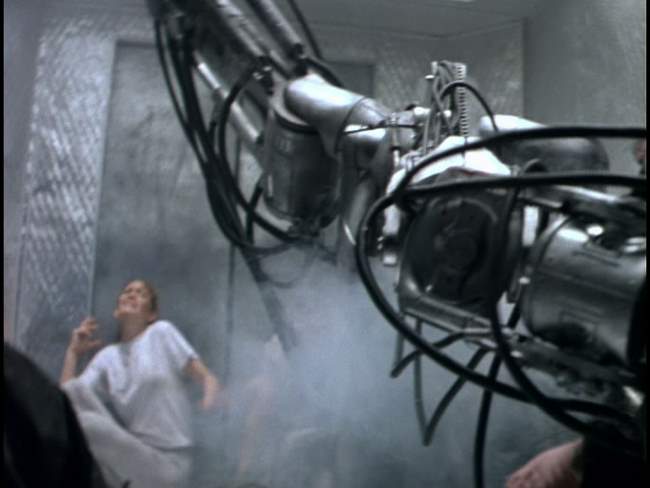
The Robot Monster: OK, so we have this really tough robot thing – virtually indestructible. Anyone wanna tell me why this robot has like a hundred rubber tubs hanging out, and nobody who fights it in hand-to-hand combat thinks of grabbing them? More to the point, why don’t the thousands of rounds of bullets affect the tubes? Bottom line, this robot was more silly than scary. In Hardware, the robot was continually shown moving quickly in low-light situations. This allowed Stanley to get away with a low-tech, but very believable robot. Unfortunately, Death Machine doesn’t take this approach – it shows the robot in detail to make sure you see its faults. Color me not impressed.
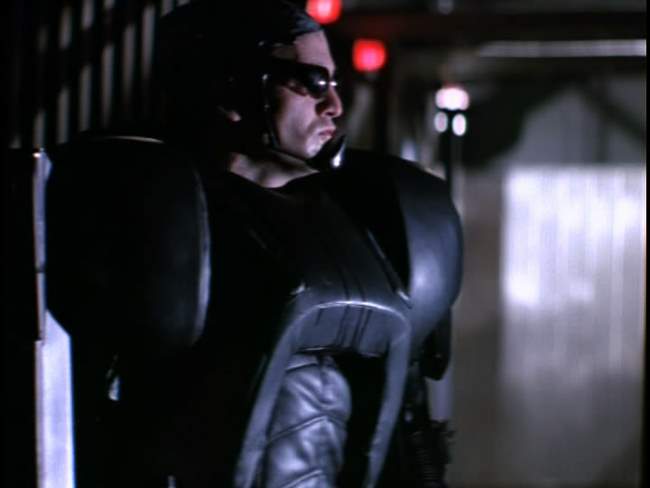
Yes, ladies and gentlemen, you can tell this is a cyborg because he’s wearing sunglasses. Also, he has that really big vinyl and plastic whatever-the-fuck-it-is on - DEFINITELY a sure sign of a cyborg warrior!
Death Machine’s Approach to Cyborgs: In Death Machine, the Chaank Armaments Corporation creates cyborgs by wiping someone’s memory and uploading it with detailed weapon systems training, and simple goals (e.g., protect me, seek out and kill “guy X”). In short, its approach to cyborgs assumes the human mind is synonymous with a hard disk. They even have an instance where a key character’s personality “backed-up” and then wiped from his mind to allow the “warrior personality” to be installed, and then later, they reload the initial personality. Puleeze, Norrington! I’m sure you coulda come up with a marginally believable cyborg warrior rationale. Too bad you didn’t take the time to think of one.
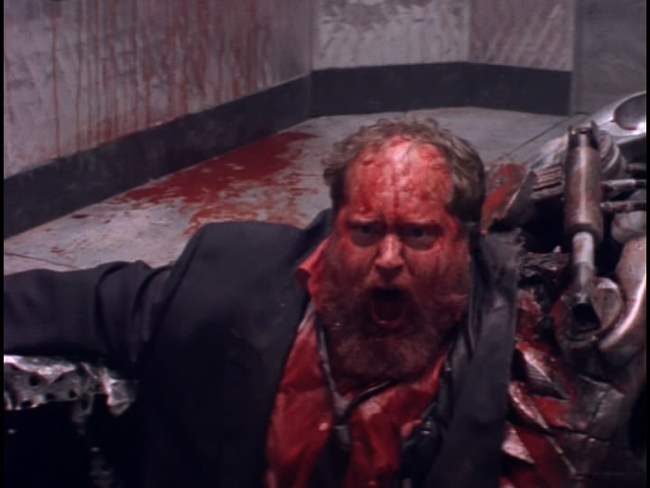
The Bottom Line: Truly, to even have a chance of being watchable, Death Machine would have needed to incorporate a heavy dose of T&A. While Ely Pouget has the looks, this never materializes. This is all the more annoying in that the inclusion of the porn reference flat out portends juicy T&A. Instead, we’re left with a shlock “B” movie, absent of T&A, without the effects, acting, plot or monster to carry the day. Brad Dourif’s character, while mildly amusing is just too over-the-top to stomach, and nobody else other than Pouget even stands out. Even worse, they screw up what should have been a very simple ending (this may be the only original part of the movie - in retrospect, Norrington should have copied this as well), leaving us with a almost complete let down, and no payoff for sticking around for 2 hours. In short, I don’t see much to recommend here.
~See movies similar to this one~
Movie Review By: SFAM
Year: 2005
Directed by: Ben Steele
Written by: Darren Dugan, John Pinckney, & Ben Steele
IMDB Reference
Degree of Cyberpunk Visuals: Very High
Correlation to Cyberpunk Themes: Very High
Key Cast Members:
Leda Nea: Xi
Goho, Mary Nea: Molly Pinckney
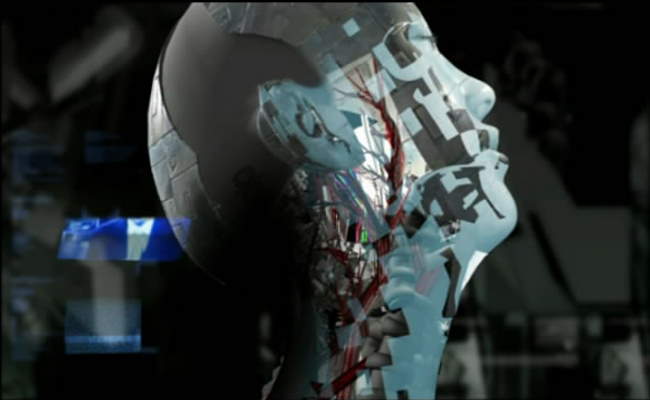
Fragile Machine - a Cyberpunk Operetta: If there was ever such a thing as a cyberpunk operetta, Fragile Machine is it. Fragile Machine is an indie anime film short created by a very small organization of talented artists called Aoineko. Fragile Machine’s narrative is largely told through haunting Chinese and English vocals set to a rhythmic, keyboard-laden techno beat (you can hear the main track by clicking on the aoineko link above). The combination of mind-expanding surreal android images with Aoineko’s music provides an intensely immersive experience – one which slowly envelopes your senses until you are a participant on Leda Nea’s journey. Fragile Machine is divided into six distinct chapters, and is narrated by a small android girl named Goho.

The Story: Leda Nea, a lead scientist heading up android firm, Göln Remedios’ Project Zero, is distraught over the death of her daughter, Mary. She no longer is interested in living, and decides to sign away her rights to be become a test subject for Project Zero. Leda Nea agrees to have her consciousness inserted into an android body, but the experiment goes horribly wrong, and Nea’s consciousness is permanently trapped in the android. A year goes by and Leda Nea becomes Göln Remedios’ primary work. Leda Nea has lost all sense of her former life, but still realizes she is trapped in a antiseptic prison – one which she desperately wants to escape.
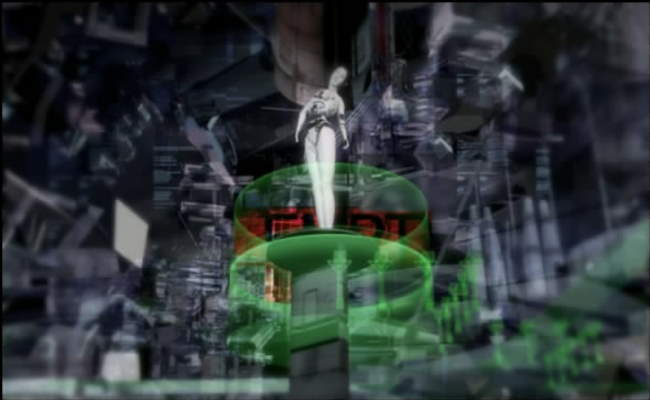
Eventually Leda Nea finds a way to trick her captors by using some of the android shells as decoys. Allthough still pursued by Göln Remedios’ droids, she escapes to the woods, and, surrounded by nature, begins to remember her humanity. In doing so, Leda Nea remembers that she hates herself and her very existence, and finally begins to remember the daughter she has lost. She continues to be pursued by Göln Remedios’ drones, but instead of getting captured she throws herself into a lake, and thus destroys her android body. At this point, her soul frees itself from its android host and embarks on an entirely new journey – one which could potentially provide Leda Nea salvation by connecting her back with that which she lost. While the ending chapter is visually astounding, I can’t go further without giving away the rest of the story.

A Post-modern Narrative: One one level, Fragile Machine appears to be a straightforward narrative in that it is explicitly divided into six chapters. Yet in watching this film, it becomes clear that the narrative is anything but straightforward. To understand the story, the viewer must pay close attention to the symbols, lyrics Goho’s commentaries, and the various visual indicators sprinkled throughout the film. While lasting just over 30 minutes, those interested in understanding the message will definitely benefit from giving Fragile Machine multiple viewings. The third time through, I found myself freezing the screen on a number of images in order to understand their significance. The story summary above is the result of watching Fragile Machine a number of times prior to piecing this all together. For instance, only very late in the film do you find out that Leda Nea is project manager of Project Zero, and is thus, responsible for her own destruction.
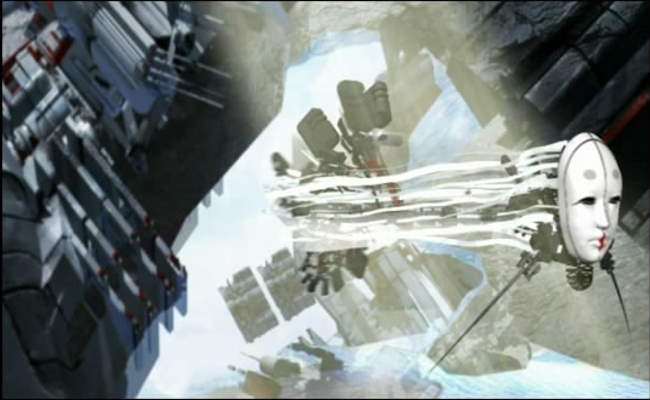
The Visuals: Even if you don’t care to spend time understanding the rich story and symbolism, Fragile Machine’s android visuals alone are well worth the cost of the DVD. Fragile Machine comes at man-machine integration and android creation and destruction from such a myriad of directions that it leaves the viewer in a state of wonderment. Through the film, color palettes are linked with the various symbols portrayed in Fragile Machine. Visual Homages are paid to a myriad of sources including Blade Runner, Metropolis, Ghost in the Shell and Planet of the Apes.
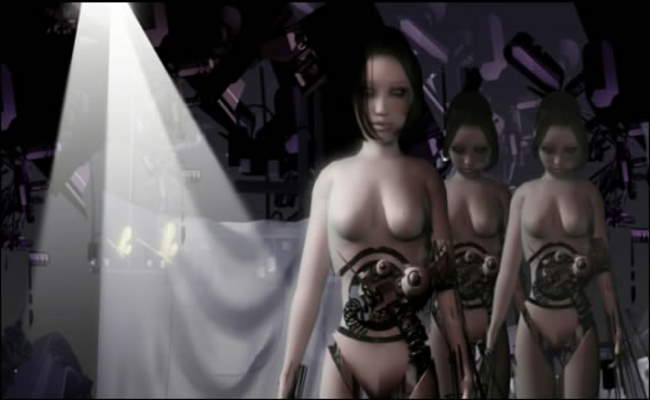
Animation Issues: While the artwork in Fragile Machine is intensely creative, the CG movement is definitely subpar when compared to some of the larger budget works. When Leda Nea is running, or the puppet narrator, Goho, is talking, the quality of the animation negatively affects the immersion. Depending on how you come to see Fragile Machine, this might be enough to turn you away from this incredible picture (perhaps this accounts for the insanely low score on IMDB). However, I would argue that the animation is only a minor knock in an otherwise perfect film short. In looking at the immensely small crew involved in making Fragile Machine, they pretty much nailed all aspects of this film that didn’t require massive CG animation engines. The post-modern story, the artwork and the music are all par excellence.
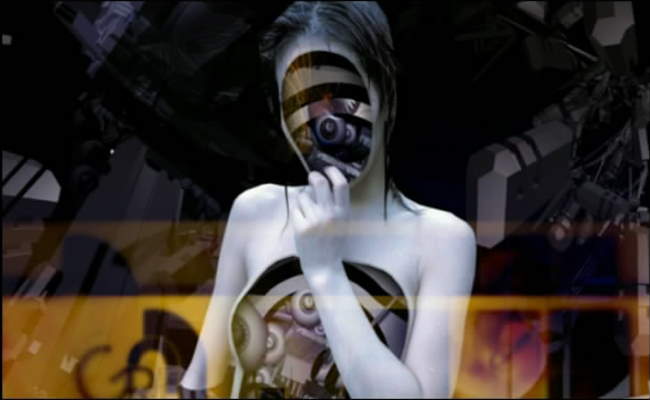
Interpreting Fragile Machine: Fragile Machine is visually and symbolically rich enough that the viewer can extract a number of fascinating thoughts. However, the larger point that Fragile Machine traces is a common cyberpunk theme - the idea that humans, in its pursuit of technology believes they will become omnipotent, with power over life and death itself. Yet in pursuing this course, we end up losing that which defines us – our humanity. Eventually, this pursuit of the taboo ends up destroying our very society. In a wonderful review of Fragile Machine, Jens points out that the corporation developing the androids, Göln Remedios, is visually similar to the Tower of Babel – both are stretching to the heavens in order to become God’s equal.
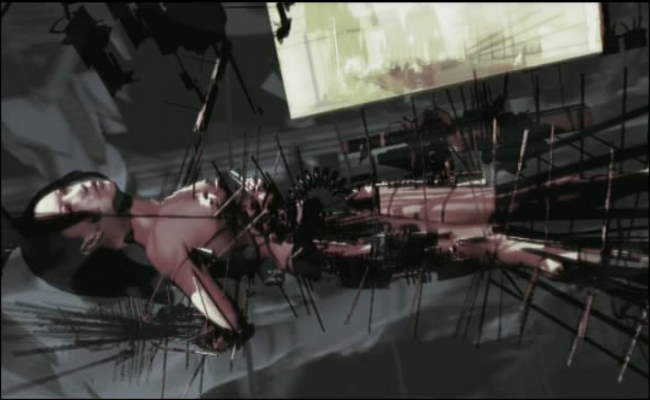
When we find out that Leda Nea is in fact the Lead for Project Zero, the emphathy shifts from a rather simplistic view Göln Remedios’ evil CEO figure being responsible to a far richer view. Leda Nea, in losing her daughter has lost her humanity, and thus no longer feels compelled to remain “human.” Her decent into subverting humanity starts well before she is captured in an android body. It begins with her work to build project zero – a project which at it core attempts to extract humanity and incarcerate it within a machine host. One almost wonders if Leda Nea initiated Project Zero in response to her daughter’s death. While the evil CEO is clearly interested in using Leda Nea as a tool in attaining virtual Godhood, it is Leda Nea who chooses to become the virtual fallen angel (as depicted by her red hue much of the time during her android descent). But ultimately, Fragile Machine becomes a story of redemption, as Leda Nea’s lost daughter, as represented by the elephant doll, becomes her guide towards finding ultimate salvation.
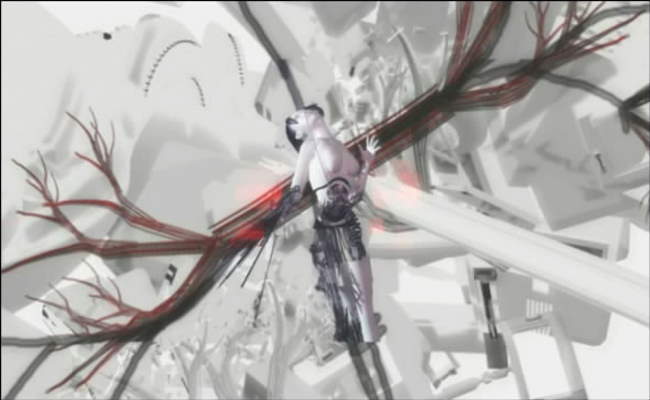
If an Android had a soul, what would happen to it when it dies? One of the more interesting questions Fragile Machine raises is the idea that if an android had a soul, what would happen when it dies? In pursuing this thought, Fragile Machine operates in the same territory as Ghost in the Shell, in which a human soul is essentially trapped within an android body. But the thought it raises can easily be taken farther than this: as we move ever closer towards sentient machines, what exactly becomes the difference between machines and humans? If machines become sentient, could they not also develop a soul? And if so, can this soul exist in some fashion even after its host has died?
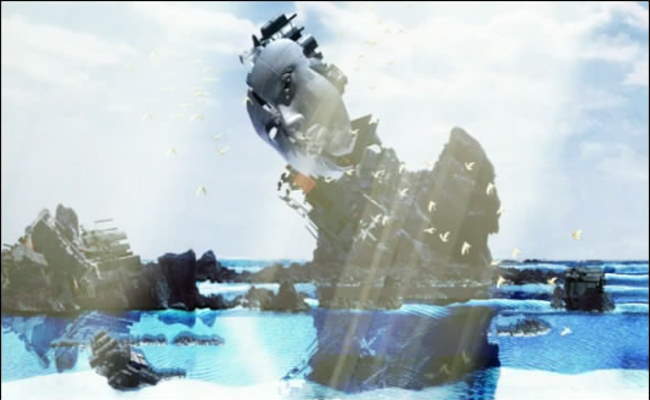
What Does a Human Mask Represent? Similar to f8, Fragile Machine uses a mask of a human-looking face to represent the attainment of humanity. Only in this case, the mask represents humanity’s technology enabled drive to create post-humanity – androids in our own image. Interestingly, this interpretation masks when viewing the last chapter of Fragile Machine leads to an interesting conclusion about the pursuit of post-humans. One wonders whether it is possible to pursue sentient androids in a way that does not explicitly challenge God’s (or nature’s) sacred role over life and death. Fragile Machine almost seems to be advocating an evolutionary, emergent approach over an overt, dominating, dehumanizing approach.
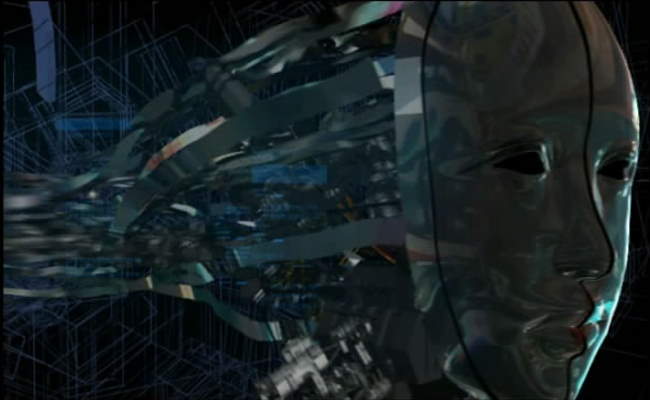
The Bottom Line: Rarely do we encounter a film so creative in its development, where the sounds and visuals are inexorably linked in expressing such an interesting story. While the animation isn’t on par with larger scale productions, the songs and visuals more than make up for it. In totality, Fragile Machine conveys a complex, multi-layered story that is rich in symbols and ideas. This is truly a piece of cyberpunk art not to be missed. The DVD was out of print but is available again (see in the comments section for details). Give it a try if you’re looking for something different.
Spoiler Alert! Page 2 has more screencaps, but some relate to the ending –>>
~See movies similar to this one~
Movie Review By: SFAM
Year: 1986
Directed by: Shigeru Izumiya
Written by: Shigeru Izumiya
IMDB Reference
Degree of Cyberpunk Visuals: High
Correlation to Cyberpunk Themes: Medium
Key Cast Members:
Lead Researcher (Male): Takichi Inukai
Lead Researcher (Female): Rikako Murakami
Third Researcher: Shigeru Izumiya
Guernica (Android): Mari Natsuki
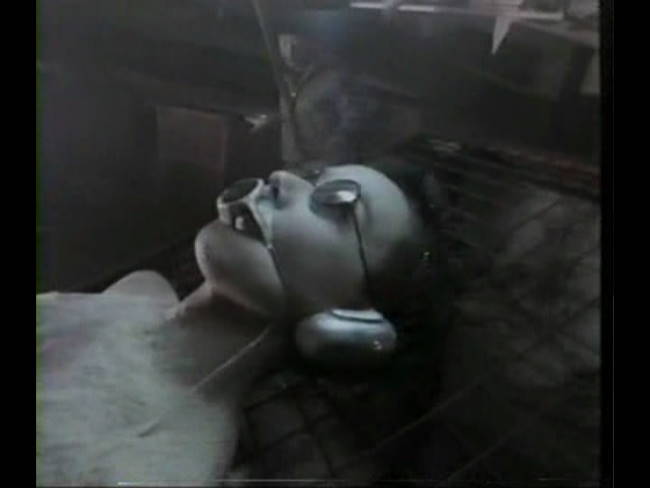
Is there life without death?
Overview: Here I yet again delve into the world of the experimental extreme Japanese Cyberpunk – this time to watch Death Power (Desu pawuda in Japanese), a movie Glam Creature discovered for me. Death Powder is a very low budget, mostly incoherent extreme Japanese Cyberpunk film with some occaisionally very interesting visuals. I probably would have liked this movie more had I obtained either a decent transfer or full subtitles. Unfortunately, the only place I could find this at the time was on LostSilver.com, a site that presses public domain movies to DVD-R format. All the main characters had appropriate subtitles, but the vast amount of mumbling in this film (mumbling usually occurred ultra-bizarre situations) was only subtitled in Chinese. The transfer was so bad that in some scenes the screen appears pixilated.
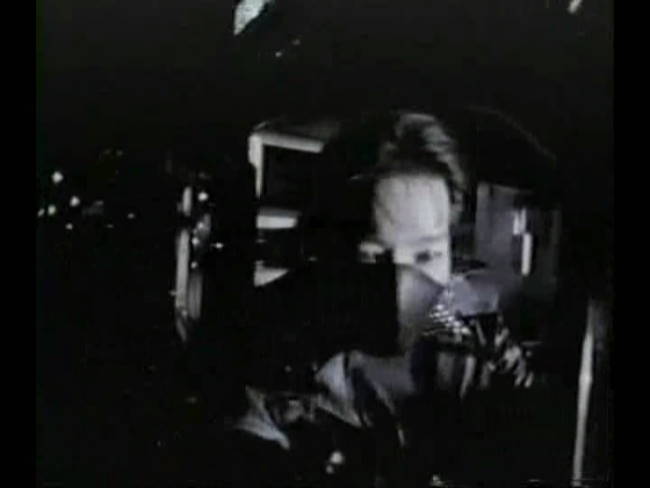
The Story: In the very near future, a group of three researchers has captured a very special android named Guernica (Mari Natsuki), and have brought her to a deserted warehouse, and have tied her to cot, with a protective covering over her mouth. One researcher (Izumiya) is left to guard the Guernica, but appears to be slowly going crazy. Two of the researchers, a guy (Inukai) and a girl (Murakami) apparently have just escaped (presumably from some fallout after capturing Guernica) and are on their way back to the warehouse. Murakami tries calling Izumiya and discovers that something is wrong.
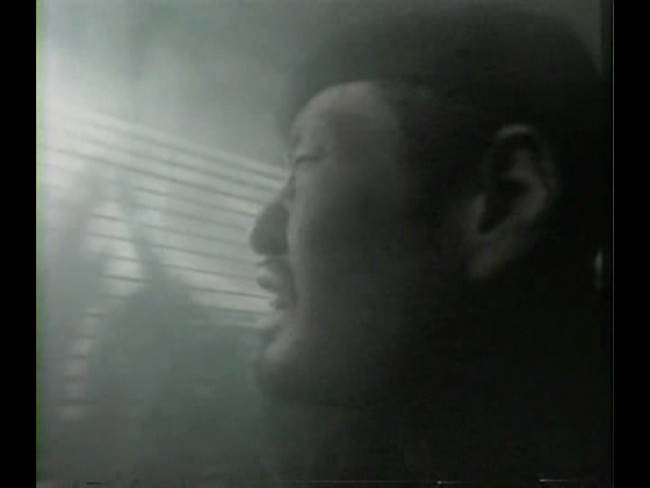
They proceed carefully into the warehouse where they discover that Izumiya has gone crazy and is now trying to kill them. Izumiya makes it to Guernica, who suddenly sits up and blows dust all over Izumiya. From there, the movie turns extremely surreal. Guernica’s body slowly disappears into dust, while Izumiya’s face starts to expand dramatically (in a very low-budget sort of way), while Izumiya rips his hand off and Inukai shoots Izumiya with a futuristic looking gun. Things settle down with Izumiya off hallucinating, while Izumiya has somehow captured and tied Inukai to Guernica’s metal cot. She gets free and beats Izumiya to a pulp.
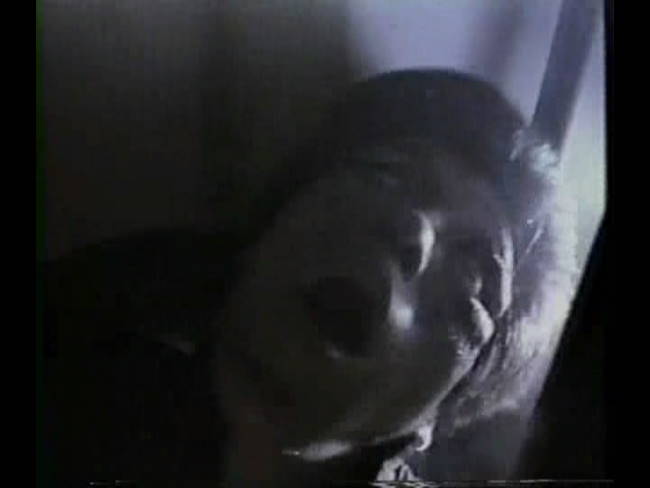
Sometimes death is the ultimate statement.
Meanwhile, Inukai’s hallucinations have provided him omniscience. Inijai proclaims, “”I understand the secrets of the flesh.” He sees Guernica’s origins and the ongoing struggle with the scar people, who are people who’s flesh is slowly decaying on their bodies. Things get even weirder from there with visuals of massive globs of oozing puss creatures with eyes, an incoherent video montage, a fight with the scar people, and in the end, we find a very bizarre looking monster sitting in a vast setting of emptiness.
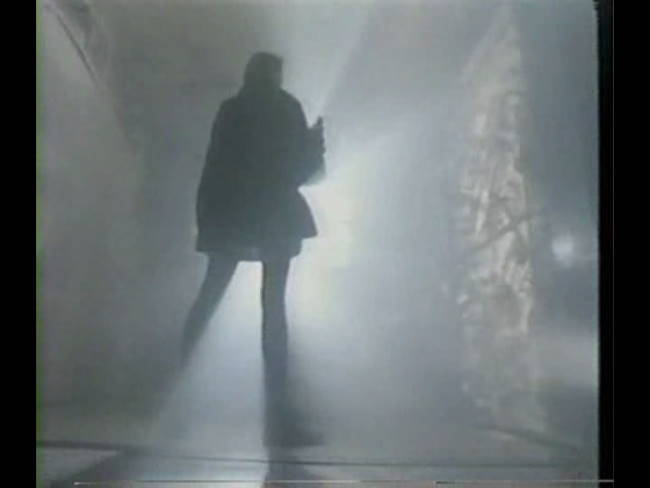
What The Fuck is This Film About??? I fully acknowledge that Death Powder is incoherent enough that attempting to interpret it will potentially lead to nonsensical ambiguity. Unlike others like Tetsuo, which CLEARLY has a point even though many claim are incoherent, this film may not simply hold together well enough to have a clear point. That being said, after two watches, it appears that the death powder is an allegory for technology’s insidious and pervasive destruction of mankind. That Android chick’s name, Guernica, after Picasso’s famous painting, gives us the clue. She is the embodiment of humanity’s destructive tendencies, and like the painting, her ultimate impact is seen with dead, injured, dismembered and torn bodies. That Geurnica is created by a rock star playing an electric guitar indicates that our technology enabled modern culture is ultimately to blame. A bastardized version Christian forbidden fruit analogy also is at play here in that a woman (android) possesses the forbidden knowledge, and humanity tries to access it by capturing her and covering her mouth. The implication is that they hope to possess the knowledge without suffering the consequences.
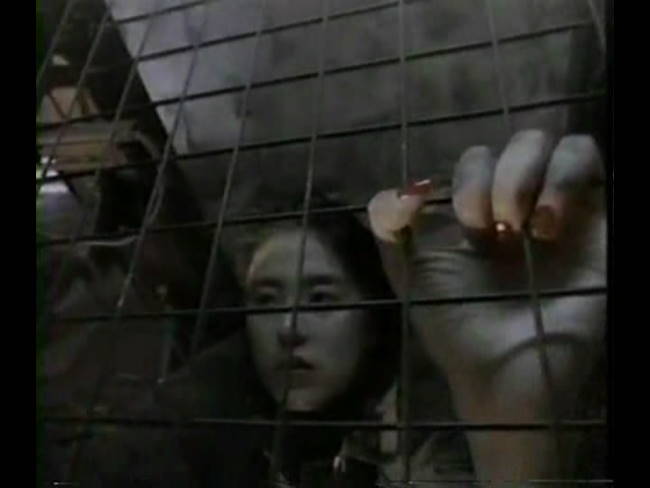
The other aspect that Izumiya seems to explore is the nexus between life and death. Death Powder explores competing ideologies in examining this question. Initially, we are told that “Life without flesh is death.” The researcher, now fully infected and potentially dead, but still thinking (meaning his flesh is dead), responds to this thought with the following:
There is no death without life. There is no Answer to this Madness.
Heaven exists within my body…dead. But Hell…Hell is everywhere!
To which, the Android, Guernica responds, “Is there life without death?” From an android’s perspective, this is probably a VERY interesting line of questioning. If you are able to think, does this not imply you are alive? But if you have no flesh – doesn’t this imply you cannot die? This is of course completely at odds with the original statement. When we include the scar people – a faceless gang of humans losing their flesh – as those espousing that life without flesh is death, we are left with a losing struggle where living humanity (flesh) is supplanted by our technological monstrosities our culture creates. In effect, Izumiya is espousing that humanity slowly dies as our culture is merged with technology. In the end, all that is left is this zombie-like monstrosity that is neither alive or dead, but definitely isn’t human.
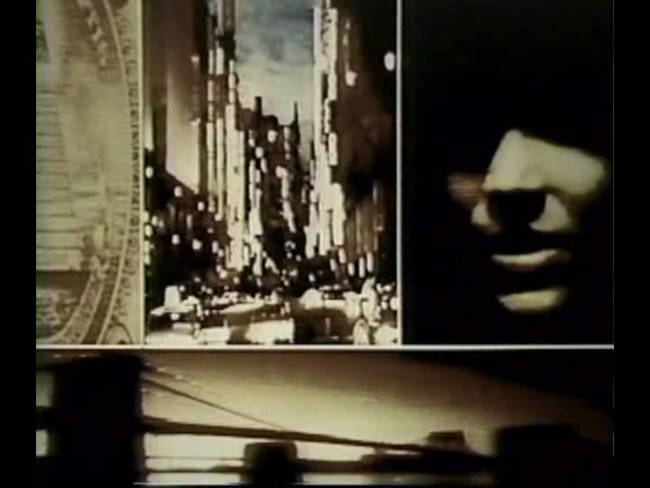
Disconnected Bizarre Video Montage: At about three-fourths through the 62 minute movie, Death Powder breaks into a ten minute plus video montage segment. This occurs after the death powder-enabled android chick states something to the effect that there are far more people to infect, so she must hurry. I’m guessing this is supposed to be Guernica’s Destroy the World tour. This would work except that when its over, we are brought right back to the warehouse, this time to await some workers who are lured into the pit of horrors. In ending it as such, the purpose of the montage seems to disappear. In the end, we are left with the idea that director Shigeru Izumiya had also developed this cool video montage footage, and wanted to include it somewhere. It does look pretty cool though.
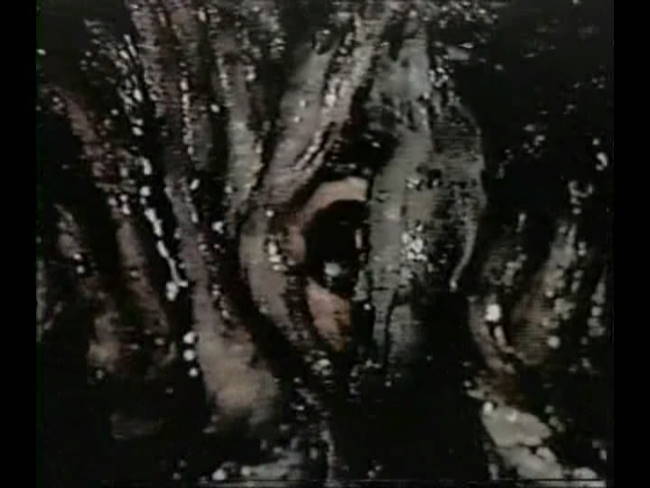
Life without flesh is death.
The Visuals: Like many experimental films, Izumiya literally throws in every kind of camera technique available. We get tons of perspective shots, multiple exposure shots, different overexposed lighting shots, completely strange camera angles (like a sideways up-above running shot), all wrapped up in a myriad of disturbing visuals. Whether we get coherency or not, Death Powder is certainly creative. I really wish I had been able to obtain a better copy of the film, as I’m afraid the color is washed out on Lostsilver’s public domain version (although I don’t know – perhaps this is intentional). This leaves the film with a very washed out, almost (but not quite) black and white look.
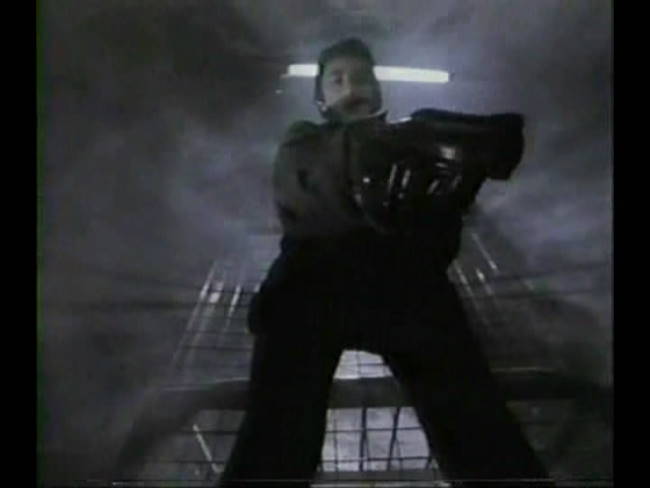
The Sound: Perhaps Death Powder’s best strength is in its sound effects. Izumiya continually barrages the audience with a cornucopia of industrial/techno cyberpunk sounds. We get various low-toned keyboard pieces combined with strange and eerie sounds of all types and textures. If I had to guess, I’d say the majority of the time spent on producing Death Powder was working with the sound track – it’s by far the most polished aspect of the movie. This may not be all that surprising considering Izumiya got his start composing for Japanese Cyberpunk director Sogo Ishii on Crazy Thunder Road.
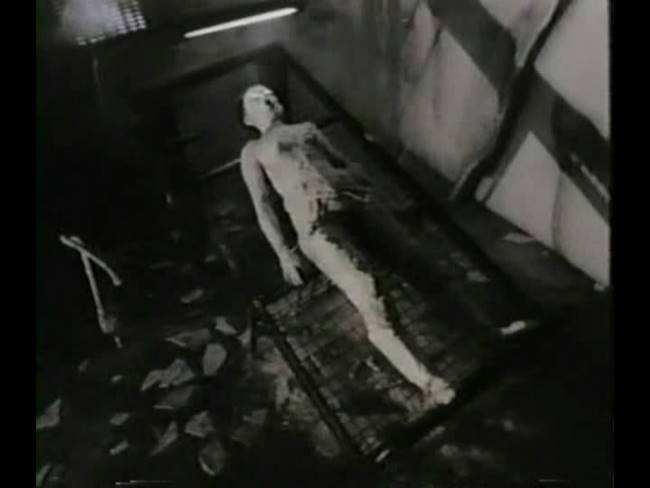
The Bottom Line: I wonder if I’ve become jaded since watching a number of these extreme Japanese Cyberpunk flicks. Many comments about Death Powder indicate that people were blown away by the visuals and have never seen anything like this – some to the point of even having nightmares about it. If this is your first, or perhaps even second experience in delving into extreme Japanese Cyberpunk movies, than perhaps Death Powder comes off much better. However, as much as I love the experimental visuals, this movie clearly could have been put together better. There is a lack of crafting in Death Powder which negatively impacts the movie-watching experience. Still, Death Powder, while incoherent, is at least unique, creative and interesting, so there’s certainly something worth watching here. It’s for this reason that I’m giving it 5 stars instead of 4. I really wish I was able to get a better transfer of this, but even if I had it, I still doubt I’d be giving it more than 5 stars.
~See movies similar to this one~
Movie Review By: SFAM
Year: 2002
Directed by: Kazuto Nakazawa & Naoyuki Yoshinaga
Written by: Chiaki Konaka
IMDB Reference
Degree of Cyberpunk Visuals: High
Correlation to Cyberpunk Themes: Medium
Key Cast Members:
Basil: Kazuhiko Inoue
Reiko Michaelson: Akemi Okamura
Rod Kimball: Somei Uchida
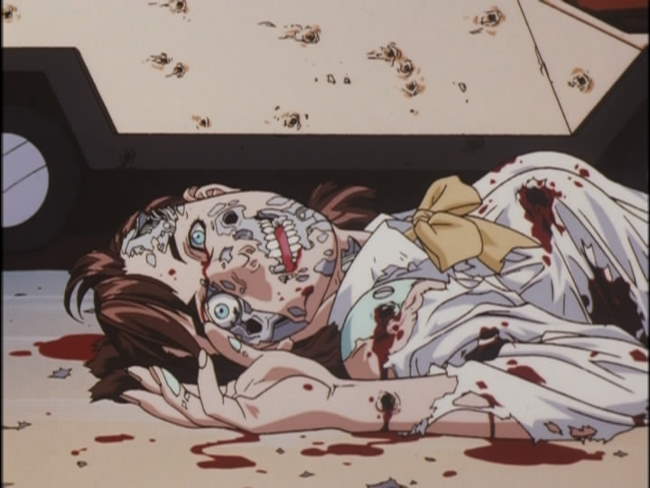
Overview: Parasite Dolls, another cyberpunk anime written by the prolific cyberpunk anime master, Chiaki Konaka (Serial Experiments Lain, Texhnolyze, Armitage III, Malice@Doll, and Bubblegum Crisis 2040), is a visually interesting, VERY adult OVA from the Bubblegum Crisis universe. The androids (called boomers) in this show are fully android (at least regarding their mental processes) unlike in other Bubblegum stories where they seem to be a combination of human and android. While this is a three part OVA, I really like that they are almost integrated like a movie, versus as separate episodes. Fair warning, you get gruesome deaths in the throws of sex, prostitution, lots and lots of gore.
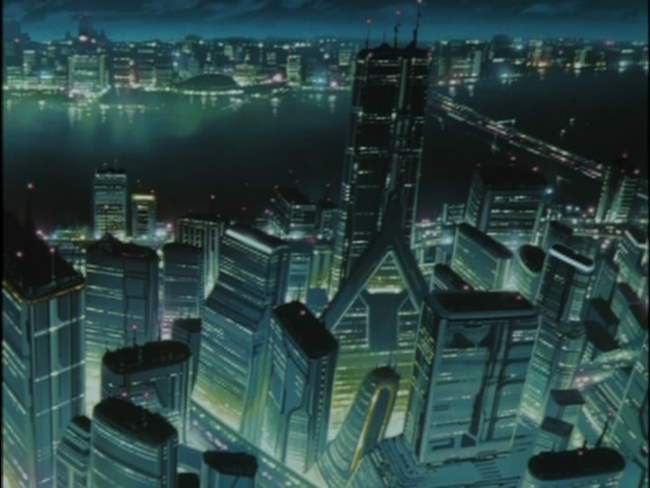
The Stories: There are three separate, interlinked stories on the Parasite Dolls OVA. At the start of the first story, set in the year 2034, where society has become a troubled mix of humans and androids called “Boomers.” The Genom Cooperation has created boomers to serve mankind in all aspects, from police support to sex dolls. Unfortunately, problems emerge, both with the boomers and with humanity’s reaction to their presence. A clandestine division of the Advanced Police (A.D Police) called “Branch” has been created to investigate human to boomer related crimes. The story follows “Buzz” Nikvest, a policeman with a troubled past, and his partners at the Branch division, which include a very helpful Boomer called Kimball and a stereotyped spunky, sexy, tough cop chick named Reiko Michaelson.
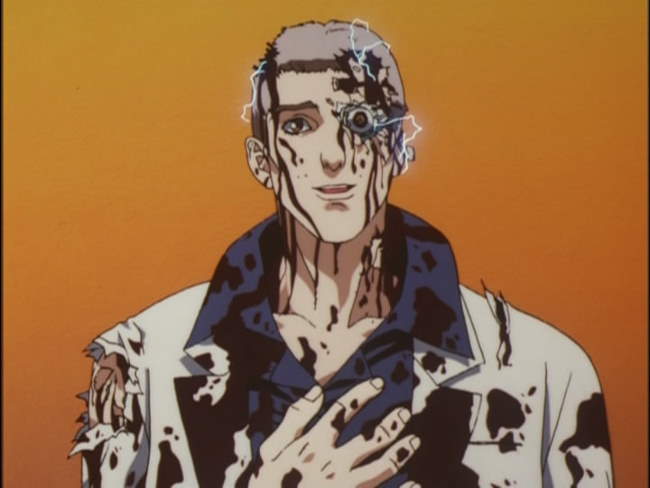
In the first episode, rogue boomers start randomly attacking and killing innocent humans. Buzz and company are brought in to investigate. During the course of their investigation, they find that things at the Genom corporation are not all above board. This story has some pretty cool visuals of shot-up boomers, and a few interesting
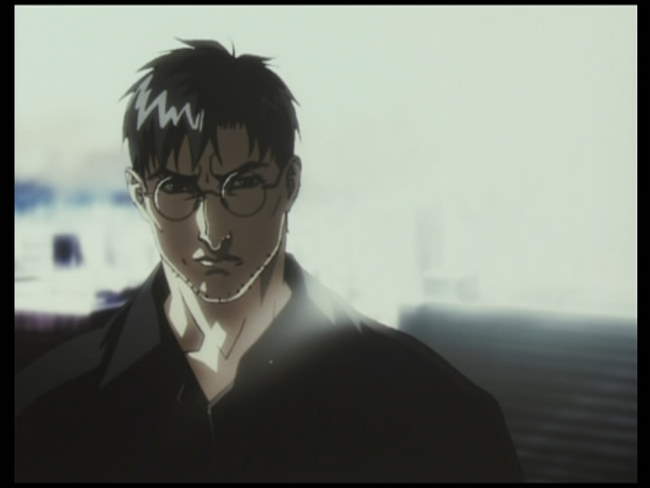
The second episode, which takes place a year later, involves a truly bizarre android monster called the “Boomer Crusher” and a very lifelike boomer prostitute who has feelings and has dreams. Unfortunately, the prostitute is being controlled in her dreams to cause some truly bizarre human deaths. We find out more in the third story of who probably created this monster, but it isn’t really stated in the narrative.
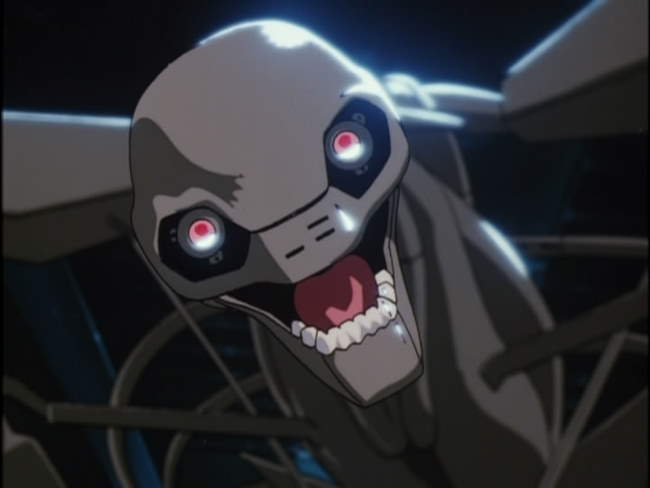
In the third episode, which takes place 5 years later, Takahashi, the head of Branch Division is missing. In searching for their missing box, Buzz, Kimball and Reiko find a connection between Takahashi’s disappearance and the recent spate of anti-boomer activity that has grown in recent years. Worse, as explosions go off all over the city, Buzz is framed as the fall guy. As the story unfolds, the viewer is left with the idea that all three stories are related to the same larger plot.
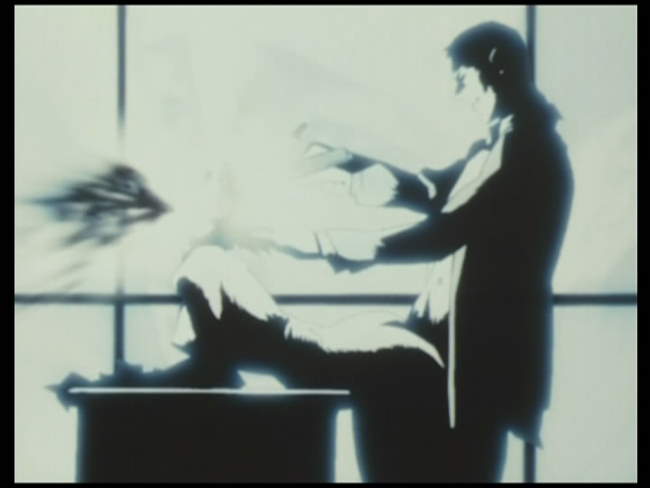
The Visuals: Parasite Dolls has a really nice diversity of looks, often emphasizing extreme shadows in single color light settings. Both blue and gray are used extensively for this, often yielding terrific visuals. In other cases, Parasite Dolls looks like a rather decent, but not spectacular anime. It does best when it strives for the edgy look. Had this been used throughout, Parasite Dolls could have come off as something bordering on special. As it stands, some parts really stand out, while others you almost wait to get through.
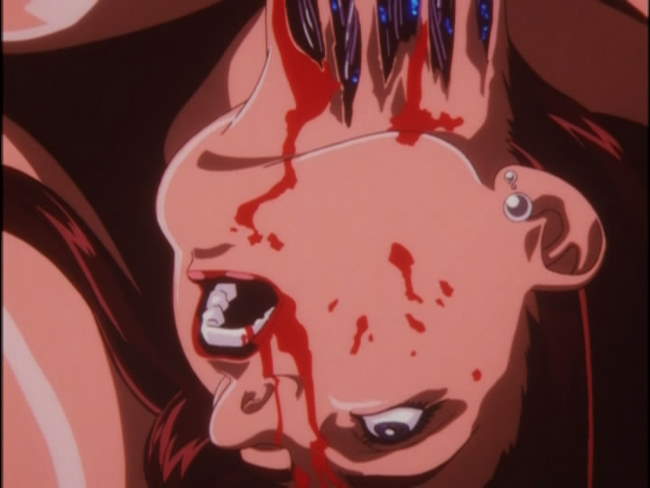
Boomers – property or unique individuals: Nothing new here – Parasite Dolls explores the continually explored question of whether androids are merely property or something more unique. Unfortunately, no new ground is traversed. Instead, the interesting aspects of this come from the seedy visuals themselves. There are a few scenes in Parasite Dolls where the visuals make a far more interesting statement than the narrative. These usually involve truly gruesome Boomer deaths.
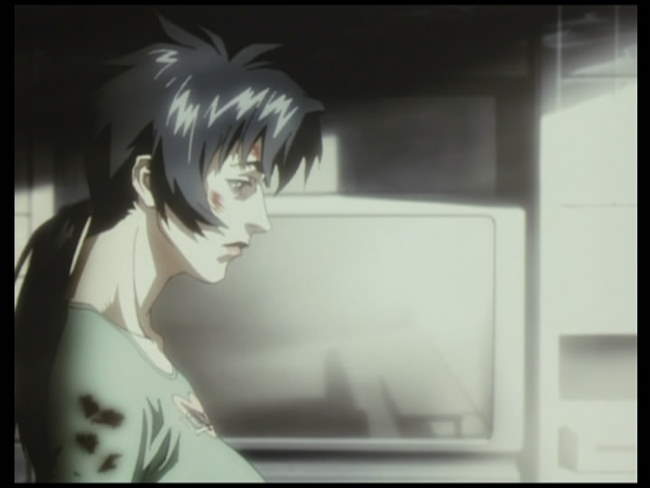
The Seedy Underground: A seedy feeling pervades Parasite Dolls. We get nudie bars, slovenly side-walks, seedy corporate meetings, and absolutely base human behavior. We have hot chick boomers continually debased and abused. Even the weird creatures that appear have an icky feel to them. The constant theme we see here are fallen boomers. They had so much potential, but…
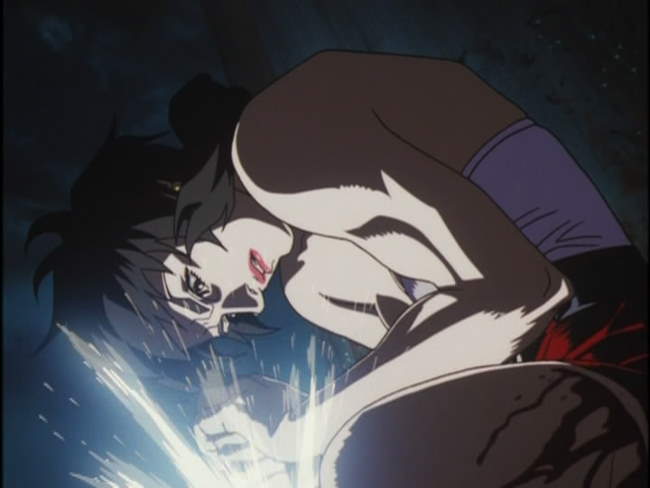
The Bottom Line: The stories themselves are somewhat uneven and problematic, but the visuals are interesting enough to make this worth a watch. While the narrative is more straight forward than many of Chiaki Konaka’s stories, it does require a few minutes thought to put the overall picture together – otherwise, all three episodes almost seem disconnection. Even though Buzz is a pretty interesting character, the rest of the characters we encounter are pretty much the cookie-cutter variety. Worse, as the episodes take place over a six-year time period, you would really expect to see growth in the characters, or at least changes in the nature of their relationships. Instead, the characters we encounter at the beginning are the same ones six years later. Still, for a 3 part OVA, Parasite Dolls is worth a watch for the visuals alone.
~See movies similar to this one~
|




















































































